General Insurance Blogs, Articles & Updates by - Magma HDI
Have us call you
- RENEW YOUR POLICY
- BUY NEW POLICY

Six practical gifts for any parent they would love
Parenting is tough, but buying an ideal gift for your parents might be even more challenging. What would you gift the people who gave you everything? Is there even a perfect gift for parents? The finest presents are ones that celebrate their hard work and provide them with a much-needed break from daily life. These gift choices are guaranteed to be a success.
Even a tiny present may be a polite way to express your love and gratitude towards them. Owing to internet purchasing, your options are almost limitless. However, this may lead to some significant stress while decision-making.
We are here for your help as we have curated a list of the most fantastic presents for parents.
1. Packing cube set of 6:
This is a packaging set that contains six pieces. Cubes of four different sized bags, one for footwear, and one zippered bag to separate dirty clothes. This could be the perfect gift for people who like to travel and explore around. It is incredibly organised and easy to carry along.
2. The latest Fitbit:
A fitness watch is an intelligent fitness tracking device that also serves as a watch. It keeps track of your daily routine, steps, burned calories, hourly activity, heart rate, and more. This gift could inspire your parents to start working out and look after their health.
3. A vacation:
One of the best gifts for anyone is a little vacation to cherish priceless moments. A trip that takes away all their stress and worries. Some alone time with nature is what a parent needs after looking after everybody in the family. So, go ahead and book a lovely trip to a beautiful destination.
4. Neck and Back massager:
Growing up, you may have been a pain in the neck (literally!). This is your chance to make up for it by giving your parents an electric neck and back massager. Despite the age, one could always have the benefits of massages whenever they want.
5. Gardening kit for organic kitchen herbs:
A one-of-a-kind gift for people who love to cook with fresh home-grown ingredients. Gardening takes up a lot of your time, but the outcome is worth every second you invest. This is also an excellent hobby for retired parents.
6. Health insurance:
Health insurance is the most valuable gift you can give your parents. They never prioritise themselves, so you have to do it for them. All you have to do is look for the best health insurance in India for parents and purchase it to secure their health and ensure their happiness.
There's no doubt that the most important people in your life deserve nothing but the finest, no matter what the occasion. Nonetheless, when it's time to find the right present for them, it may be tough to think of something as unique as them.
That's where our list comes in. Picking gifts for parents will always leave us perplexed for a while. However, something practical and functional is an excellent choice. We hope this list guides you in choosing the perfect gift for your parents.
Click HERE To get the best health insurance in India for parents, click
Disclaimer: The information provided above is for illustrative purposes only. To get more details, please refer to policy wordings and prospectus before purchasing a policy.

Learn how to slow down your bike after an unexpected brake failure
We can rave about the look and mileage of our bike's engine, but, at the end of the day, it all comes down to how efficient it is on the road. Driving in a country like India, where the roads and the path walks have no clear distinction, we might encounter various instances where we have to dodge a huge pothole or the kids playing on the street. So, having an efficient brake system is vital to ensure the safety of yourself and others.
The properties, characteristics, and behaviour of brakes do not always remain the same. These can be influenced by temperature, operating habits, operating durations, and effects of interconnected parts, sometimes leading to brake failure.
In situations where you come across a brake failure, being prompt on your toes will help you avoid any accidents.
1. Maintain your calm:
It's common knowledge that maintaining your composure under pressure helps you navigate any problem. The same is applicable for the time that you are on the road. If possible, taking your bike to a less busy road should be the first step to avoid crashing into people or vehicles.
2. Do not turn off the engine:
Your first instinct could be to turn off the engine and let the bike stop, but this can be extremely dangerous. You need to control the situation to avoid traffic crashing into you. So having a constant acceleration in this situation can prevent a crash.
3. Stick to the road and not the sides:
Without the brakes, your bike will be difficult to manoeuvre. Sticking to the sides might present you with uneven roads. Instead, wait for the bike to slow down before pulling over to the side of the road. Only under hefty traffic conditions should you consider going to the side of the road while your bike is still retaining speed.
4. Use your gears:
Surprisingly, gears can assist you in slowing down your bike in a situation where brakes aren't responding. You need to be alert and immediately start lowering your bike's gears. This will create a mechanical resistance from the engine opposing the motion, causing the bike to slow down. Using this method can help you control the bike and prevent the situation from escalating. Once your bike slows down, you can pull it over to a safe place and then shut the engine.
5. Use your horn:
Many times, we come across people relentlessly honking their horns in traffic jams. While that might sound annoying in most cases, do not shy away from alerting people on the road. Since they are not aware of your situation, it is best to attract attention and to be careful.
These are some things that you can focus on if your brakes fail. Road safety is paramount whether you are driving or a pedestrian. Be alert while handling the bars, focus on the road, and resist overspeeding.
Regular check-ups and servicing ensure both you and your bike are covered. Having bike insurance can add value to your experiences. So, consider getting bike insurance online to protect you against damages, third-party legal liability cover, and 24/7 assistance for emergencies.
Click HERE to buy bike insurance online.
Disclaimer: The information provided above is for illustrative purposes only. To get more details, please refer to policy wordings and prospectus before purchasing a policy.

Six best ways to avoid backaches during car journeys
Planning impromptu road trips is always a great way to take some time off and have fun. These days, people like to travel with ease and comfort, so road journeys have become the ideal mode of travel during vacations. However, continuous driving can become uncomfortable and cause various back troubles like backaches, stiffness, numbness, discomfort, nausea, etc.
In this blog, we will discuss the six best ways to avoid backaches during car journeys so you can enjoy your trip to the full extent.
1. Comfort:
Make sure that you are comfortable from the beginning of your trip. Do not keep purses, watches, etc., in your back pocket as it might disturb the alignment of your spine, resulting in discomfort or backache. If you are driving, sit closer to the steering wheel instead of bending or messing up your posture to reach it.
2. Alignment:
Keeping your back aligned to the seat provides comfort while driving. You can add comfortable gear and equipment to help you maintain your back alignment. Roll up a towel and keep it between your back and the seat to maintain the curve of your posture.
3. Smooth rides:
Replace any worn tyres or parts that can cause jerks on the road. Make sure that your ride is as smooth and comfortable as possible. You can use a car seat cushion to help with your sciatica pain.
4. Breaks:
Road journeys require you to sit in the same positions for a longer duration of time which can cause numbness in your legs and back. To avoid the risk of backaches, make sure that you take breaks in the regular intervals of your trip and get out of your car to stretch your whole body. Move around a bit to ensure there is no stiffness.
5. Cold pack:
If you have pre-existing backache issues, it would be good to bring a cold pack for the journey. Backaches can trigger inflammation. Applying cold packs helps reduce inflammation and calm sore and numb tissues. To sustain the temperature of your cold pack, you can carry a cooler in your car and keep reusable ice packs in it.
6. Warmers:
Some people have found that seat warmers help relax the muscles by warming up the lower back. You can use reusable heating pads in place of a pillow that provides lumbar support, heat wraps that last for longer durations, etc., for a comfortable road trip experience without the risk of severe backache.
To avoid backaches, you must take good care of your posture during road journeys. Excessive strain on your body, especially the back, due to continuous driving for hours can affect your physical wellbeing. Follow the above tips to make driving comfortable and less exhausting.
Consider buying car insurance to avoid hefty expenses in case of any mishaps. Reliable car insurance with an additional feature of Personal injury protection (PIP) will cover all the expenses, including garage costs, medical bills and provides financial security under all circumstances.
Click HERE to know more about car insurance.
Disclaimer: The information provided above is for illustrative purposes only. To get more details, please refer to policy wordings and prospectus before purchasing a policy.
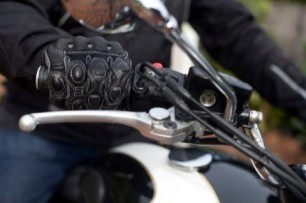
Learn how to control your bike on slippery roads or slopes
While riding a bike, it is necessary to know when to apply the rear or the front brakes. Randomly using both or either of them could lead to an accident.
Factors like maintaining your balance while driving or taking turns hold significant importance. Many people know how to ride a bike, but not everyone may be sure about controlling the bike in severe circumstances on the road. All you need is a little practice with a set of instructions to follow, and you're safe to go.
For now, we'll focus on how you can control your bike on slippery roads. This is because not everyone knows how to manage their balance, maintain a stable speed, and apply brakes on wet or slippery roads.
1. Brake force:
While you're driving on any conditional road, it is necessary to know all the braking techniques beforehand. For example, if you're driving at 20-30 miles per hour, you can use the rear brake and apply the same. But, it would help if you pressed it gently without much pressure. Applying too much pressure may cause you to end up slipping on the road.
Slippery roads are unsafe for driving. No matter what speed you're driving at, you can apply both brakes at the same time but with the same amount of pressure. However, pressing either one with higher intensity than the other could be risky.
2. Tyre gripping:
This is not well-known among most bike riders, but it is as important as knowing the braking system. A tyre should have a good number of treads to provide you control over slippery roads. So always make sure to check the grip of the tyres.
If the tyre does not have enough grip and treads, there won't be a layer of protection from the water on the road. A smooth surface can make your tyre straight flat and drastically increase the chances of slipping. Do not forget to check for any punctures or cuts on the tyre before heading for your trip.
3. Speed limit:
Many accidents occur because of the driver's negligence towards the speed limits. Managing the overall balance and speed in a car is different from bikes. If you want to stop or slow down, apply either or both brakes with equal pressure. Never slow down instantly. Leave the throttle and apply the brakes only after that.
4. Chain of the bike:
When you're driving on a wet or slippery road, the life of the chain could easily get affected by junk or jamming. In addition, if the chain is not oiled regularly, it could get loose and come off the socket. Hence, ensure to oil the chain regularly.
Driving on slippery or uneven roads can be tricky, so having bike insurance to protect you in any situation is essential. In addition, bike insurance will guarantee financial assistance in case of any damage to your vehicle and help you rest assured. With the tips mentioned above, enjoy your ride in the rain! Drive safe!
Click HERE to buy ideal bike insurance.
Disclaimer: The information provided above is for illustrative purposes only. To get more details, please refer to policy wordings and prospectus before purchasing a policy.
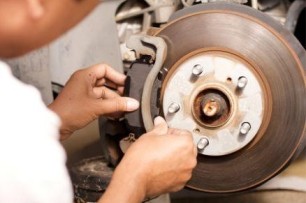
Here are a few ways to identify worn-out brake pads and fix them
If you own a car, you have to check on different parts that might require maintenance and replacement from time to time. You cannot be careless; otherwise, it might risk your and your family's safety and cause damage to your vehicle. In addition, it might restrict your dependency on it until the issues get fixed. Therefore, you need to stay ahead of these problems and watch for future repair and upkeep indications.
This article will discuss a few ways to identify worn-out brake pads and how to fix them. Now, worn-out brake pads are a thing you can miss out on while driving your car. But, first, you need to understand why you need to change your brake pads and how often you should change them.
Brake pads are made from various materials, ranging from metallic to composite to ceramic. However, irrespective of the material they're made of, you are supposed to replace them occasionally. Therefore, making sure that your car stays operational is very important, and changing worn-out brake pads is a part of accomplishing that. In addition, replacing your brake pads helps you in minimising your vehicle maintenance costs.
Now let's discuss WHY you need to change your car's brake pads:
1. Brake pads don't last the lifetime of your car and need to be changed at regular intervals.
2. They lose their efficiency every time you drive your car. So, the more you drive your vehicle, the more worn out the brake pads will be.
3. If you use your vehicle occasionally, the brake pads will still need replacement later than those who use their car frequently.
4. The car's ability to stop effectively reduces with worn-out brake pads. As a result, the overall effectiveness of the braking system also decreases.
5. The diminishing ability of your car to stop due to worn-out brake pads might lead to severe accidents, endanger the lives of the passengers, and cause severe damage to the vehicle.
HOW to identify if it's time to replace your car's brake pads:
1. It is helpful to have a brake pad sensor and "alert" light in your car. The light turns on, giving a notification that your brake pads need replacement.
2. Screeching or squealing noises while driving or applying the brakes indicate worn-out brakes.
3. Replace the brake pads if you notice that the car brakes are shaking. You will also realise that more effort is required to stop the car, and the braking is no longer smooth.
4. There is a grinding noise upon hitting the pedal.
5. During an oil change, when your car mechanic informs you about wearing and tearing of brake pads.
6. If they have reached their limit of service. Brake pads come with a stipulated period to work to their best performance. Eventually, they deteriorate in quality due to constant friction and wear and tear.
Now that we have discussed a few ways to identify worn-out brake pads, it would be wise to invest in car insurance to claim proper maintenance and various expenditures in unprecedented circumstances. You can explore all available insurance options and buy online car insurance that suits you best for your car.
Click HERE to know more about online car insurance.
Disclaimer: The information provided above is for illustrative purposes only. To get more details, please refer to policy wordings and prospectus before purchasing a policy.

Plan your perfect workcation at these top five serene destinations of India
Two years ago, the pandemic took over our lives like a storm. People were locked inside their homes for months on end. And as soon as the restrictions were lifted, we saw an increased number of people looking for ways to unwind. Having been cooped up inside their rooms for a long time, people started looking for alternate work locations. This became a growing trend amongst the working group. Studies suggested that taking workcations positively reflected the employees' morale and increased productivity.
The term workcation is a combination of two concepts; work and vacation. We saw people flooding their social media with pictures of them working from beautiful mountains or beaches in the background. If you have been wondering where to go for your next workcation, this article is just for you. We have brought a list of a few places you can go to enjoy your work.
1. Pondicherry:
If you are looking for an ideal beach location, Pondicherry is the place for you. It hosts various big and small cafes with a soothing ambience. Make use of the free Wi-Fi in the cafes for your work as you indulge in the delicious treats offered. Spend time in various eateries in the mornings and unwind by the beach for spectacular sunsets in the evenings.
2. Kasauli:
Any Ruskin Bond fan will know why Kasauli is on this list. This beautiful hill station in Himachal Pradesh boasts picturesque views of snow-clad mountains and lush forests. Kasauli, to date, holds memories of British history in its architecture. The churches offer a peaceful environment, much like the rest of the city, where you can sit with a warm cup of coffee and work your way through a stress-free day.
3. Munnar:
For a tea lover, there's no better way to work than with the aroma of tea in the air. Munnar hosts a variety of tea museums and stalls where you can enjoy the different kinds of tea that the town has to offer. The misty hills, the fast-flowing streams and tiny little cottages are equivalent to paintings. Enjoy your tea with some traditional Kerala banana fritters as you clock off for the day.
4. Udaipur:
The Venice of the east has an array of lakes with the beautiful Aravali hills skirting it. Work in the midst of royalty as you explore the various breathtaking palaces that Udaipur hosts. Characterised by a rich history, Udaipur is a must on your list if you are a history enthusiast. It has something for everyone, varying from grand palaces to tiny cafes, monotony is out of the question for any traveller.
5. Goa:
This is a no brainer for anyone wanting to take a vacation. If you are a party animal, there are many options in North Goa. Work in the mornings while enjoying the sounds of the beach and join the crowd for the party in the evening. However, if you prefer peace and calm, South Goa is the place for you.
These are a few places you can choose from for your next workcation. Keep in mind that the pandemic is not entirely over. So wear masks and carry sanitisers at all times. With such unpredictable times, it is a wise choice to buy insurance policy online. Invest in an insurance policy to ensure your travel plans are intact, and in case of an unforeseen expense, you stay is covered.
Click HERE to buy insurance policy online.
Disclaimer: The information provided above is for illustrative purposes only. To get more details, please refer to policy wordings and prospectus before purchasing a policy.
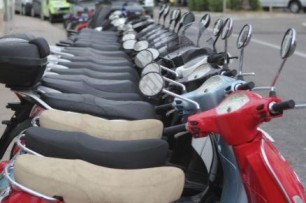
Five best tips for picking the right two-wheeler to satisfy your needs
Imagine you are already running late for an important meeting and get stuck in traffic. It sounds dreadful. With increasing traffic situations, two-wheelers are the most convenient way to reach your destination. In addition, they are easier to maintain and much more affordable.
Two-wheelers are your asset, and investing in one means choosing the best for your needs without ripping your pockets. So, here's a checklist that will make the decision easier when you buy a two-wheeler.
1. Understand the purpose of your two-wheeler:
Understanding the purpose of your two-wheeler is very important. How much will you use it? What will your daily travel be like? Are you going to use it for office work, personal travel, long rides, etc.?
Based on your purpose, you can select the right two-wheeler. For example, if you are taking it for family use, you might consider taking a vehicle that's convenient for every member of the house. Similarly, if you are going to use it for office or personal use, a bike can come in handy.
2. Mileage:
This is no surprise that petrol prices are becoming sky-high. Every two-wheeler comes with extra mileage, and you don't want to invest in one that shakes up your finances with the increasing expense of petrol every month.
Depending on how much you can spend on fuel every month, look for a vehicle that gives good mileage. When you search online, you can get details about the vehicle's mileage and decide accordingly. For example, a sports bike will have less mileage than a scooter.
3. What is your budget:
Budget is one of the top factors to consider when buying a two-wheeler. First, understand your monthly income, consider your expenses, then look at how much you're willing to spend on the two-wheeler.
If you are looking forward to paying for your two-wheeler in monthly installments, consider determining the EMIs you will have to pay. If they are too much, you need to develop an effective saving plan.
4. Service and maintenance:
No two-wheeler works properly without good maintenance. However, when you visit the store, ask about the after-service that you will get. Mainly, most companies offer first three services. Understand how much you have to spend monthly on the vehicle's maintenance. It will always help if you go with popular two-wheeler brands whose spare parts are affordable and readily available.
5. Features:
Every person has different expectations from their two-wheeler. Some may look for a good design, while others lean more towards comfort. Additionally, if you have back issues, you may want to consider that driving the two-wheeler does not hurt your back. List all the features you are expecting and consider the above points before selecting the best two-wheeler for you.
The tips mentioned above will help you determine if the two-wheeler is perfect for you or not. After deciding, ensure that you buy bike insurance online to protect your vehicle if things take a wrong turn and put a less financial strain on you. Your dream two-wheeler is just a few steps away. Go ahead and confidently pick the one that suits your needs!
Click HERE to buy bike insurance online.
Disclaimer: The information provided above is for illustrative purposes only. To get more details, please refer to policy wordings and prospectus before purchasing a policy.

Plan a perfect summer vacation to these top island tourist places of India
From ice-capped mountains in the north to beautiful peninsulas in the south, India promises several travel experiences for everyone. What astonishes the travellers is the diverse local culture, cuisine, and lifestyle that you can enjoy in every part of India. The country comprises various big and small islands with rich cultural backing, and today we will look into a few of these to help you plan your next summer vacation. We bring the top 05 best islands to visit in India, which you can add to your travel bucket list.
1. Diu island:
Possibly one of the most beautiful islands on the list, Diu Island consists of beaches and heritage that are sure to enchant anyone who visits here. From forts to caves to museums, Diu offers so much to explore.
The Diu fort reveals some of the forgotten Portuguese histories with eye-catching stonework structures. After exploring the city throughout the day, a visit to Chakratirth beach is a must. With a stunning sunset and a backdrop of local food stalls, this is the perfect place for you to unwind.
2. Havelock islands:
One of the most talked-about islands, Havelock hosts tourists throughout the year. The largest island in Andaman, it's famous for its blue water, picturesque views, and adventurous water sports. It is an easy competition to foreign beaches and will give you a lifetime of memories.
3. Lakshadweep islands:
The smallest group of islands with a population of as few as 60,000 residents, Lakshadweep is where you would want to go to stay away from the tourist crowd. Spending time on the island will help you closely see the local life in an island town. Since the beautiful beaches are the island's main attraction, this is your go-to destination if all you want is to hear the waves crashing and seagulls hooting.
4. Munroe islands:
Munroe island in Kerala is a cluster of eight islands that promises an impeccable view of narrow canals connecting a network of backwaters. Munroe islands was once an unexplored territory, and only now has it started opening to tourist exploration. Munroe has beautiful rustic architectural relics that have stood the test of time. It still holds the old culture and lifestyle of the place intact. You can enjoy a wide variety of home-cooked meals while enjoying homestay and interacting closely with the locals.
5. St. Mary's islands:
A collection of 4 small islands, this place is famous for its unique rock formation similar to Ireland's. A serene island, close to the coast of Udupi, it has significance in science as well. It is believed that these unique rock formations were caused due to subvolcanic activities in Africa.
These are a few of India's many beautiful island tourist destinations, which magnetically attract people from all over India. Remember that these places are set away from the mainland; hence ensure to look into safe and comfortable travel options. Carry first aid, emergency medicines, and snacks for the commute. Insure your travel plans with general insurance for greater financial safety. You can buy general insurance online and safeguard yourself against any unprecedented expense you might incur during your trip.
Click HERE to know more about how to buy general insurance online.
Disclaimer: The information provided above is for illustrative purposes only. To get more details, please refer to policy wordings and prospectus before purchasing a policy.
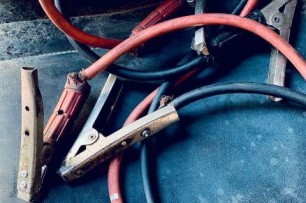
Effective ways to jump-start your two-wheeler
Imagine you have an urgent meeting in five minutes, and your two-wheeler refuses to start! In such times our mind completely freezes and fails to think of any solution.
Your previous knowledge of jump-starting your bike can come in handy in a situation like this. In this blog, we will list down some of the effective ways to jump-start your two-wheeler in any case.
1. Check battery charge:
The first and foremost thing you need to do is check the charge of your two-wheeler's battery. If the backlight and the headlight are glowing brightly, the battery is okay. If not, you need to take care of it immediately because it prevents you from starting the bike or scooter. If your two-wheeler is not starting at all, it's time to resort to one of the following methods.
2. Use another bike:
Ask someone to lend their bike to jump-start your two-wheeler. First, make sure that both the vehicles are on neutral and off. Next, connect the battery terminals of both the bikes with the help of jumper cables. After connecting them, start the other motorcycle and start yours. With no extra effort whatsoever, your two-wheeler will start. After that, take off the jumper cables and keep them somewhere safe and easily accessible.
3. With the help of a portable jump starter:
Keeping a portable jump starter at home is usually advisable, especially when your bike is a few years old. This method is easy and also the quickest one:
• Check that your bike, as well as the jump starter, are in off position.
• Connect the attached cables of the jump starter to your bike and switch it on.
• Try to start your bike.
Generally, it doesn't take more than a second or two for the bike to start, but still, if it fails to start, give it a minute or two. In addition, always keep your jump starter charged.
4. Using outside stimulus:
One of the traditional ways to jump-start your bike is to apply an outside stimulus. The most used way is giving it a push from behind. All you need to do is ask your friend, neighbour, or passer-by to push your bike while sitting on it. Remember to keep your bike in second gear to ensure safety.
The other way is to find an empty stretch of road (it's always better if the road is downhill) and try to push your bike down it. Once your bike gains a needed amount of momentum, it should start. However, always remember that the downhill is not very steep and doesn't have sharp turns or traffic. These are precautions to take to avoid an accident.
It is difficult to ignore the fact that all these options can cause harm to your bike too. Incidents are unpredictable. Therefore, to avoid unexpected and unfortunate events, it is better to have bike insurance to save you from the fear of extra expenses. Ideal bike insurance can protect your pockets from the extensive costs involved in servicing and repairing your bike.
Click HERE to know more about different deals on bike insurance plans.
Disclaimer: The information provided above is for illustrative purposes only. To get more details, please refer to policy wordings and prospectus before purchasing a policy.
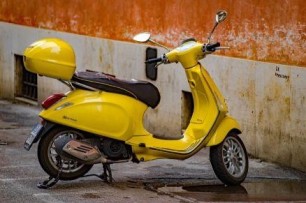
The merits and demerits of combi brake system in two-wheelers
The braking system in any bike is the most important mechanism. A Japanese auto giant has been granted a patent for their combination braking system (CBS) for motorbikes. The combi brake system (CBS) simultaneously applies the front and rear wheel brakes with a single lever.
According to the Ministry of Road Transport and Highways’ new requirements, all two-wheelers sold post-April 2019 with an engine capacity exceeding 125cc must be fitted with Anti-lock Braking System, while models with an engine capacity of 125cc or less must be equipped with a combi-braking system (CBS).
In this post, we're discussing CBS, including its merits and demerits. Read ahead if you wish to know about this remarkable technology.
CBS vs Traditional Braking System:
The most effective braking approach is to use both the rear and front brakes simultaneously. However, most bikers either don't possess the skills for it or simply lack patience. Even if a rider manages to apply both brakes simultaneously with less competence, the chances are that they won't be applying proportional force to both brakes.
In most circumstances, this results in unstable and dangerous braking. The Combi Brake System with equaliser minimises stopping distance. It also enhances braking stability compared to traditional braking so that you may ride with the assurance of effective brakes.
Merits of CBS:
1. Braking distance minimisation: It helps to minimise accidents caused due to unexpected braking by reducing braking distance compared to standard brakes.
2. Safer option: It is better and safer than the standard brake system. CBS aids in maintaining the bike's balance during braking and avoiding the risks of accidents.
3. Suitable for wet surfaces: CBS delivers greater performance and secure braking in slippery and bumpy road conditions.
4. Availability: Combi Brake System's price is relatively modest, and it's simple to use on standard motorcycles. In contrast to the Anti-lock braking system, which only works with disc brakes, the CBS system works with both disc/drum and drum/drum braking combinations.
Demerits of CBS:
The Combi Brake system is not ideal for high-performance two-wheelers. It also impairs the handling of motorcycle riders who perform stunts on the bike, putting them in dangerous positions when confronted with abrupt and intense events. That is why Indian law has only made it mandatory for bikes whose engine capacity is lower than 125cc.
So far, more than 10 million people ride bikes with CBS. While CBS may have some disadvantages, they are mainly concerned with high-performance two-wheelers. In moderate engine capacity bikes, the pros outweigh the cons. While the Indian government makes it mandatory to have CBS in bikes below 125cc engine capacity, it is also required to have two-wheeler insurance according to the Indian Vehicle Act.
Renew or buy the best 2 wheeler insurance online available in India. Several insurance companies are offering exciting offers for online transactions. So, purchasing 2 wheeler insurance online has become more popular, especially post-pandemic. You need to be wise and choose a policy that will be the best for your bike.
Click HERE to purchase 2 wheeler insurance online.
Disclaimer: The information provided above is for illustrative purposes only. To get more details, please refer to policy wordings and prospectus before purchasing a policy.
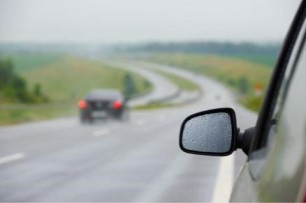
The best summer driving tips for long-distance drivers
With the summer approaching, we are all excited to get out and soak up the sunlight. Road trips during the summertime are at the top of everyone's bucket list. You can enjoy a long drive to sandy beaches and resorts or a journey to cooler, remote hill stations.
While we all love long road trips, they can quickly get exhausting when you're stuck in the same spot for hours on end. The landscape might be worth every bit of your patience, but driving for several kilometres at a stretch can be mentally and physically bothersome.
You may invest in motor insurance India to secure your vehicle's health but caring for your health while on a lengthy midsummer journey is equally needed. Following these tips while driving long distances can make your journey more comfortable, safe, and fruitful!
1. Plan ahead:
Planning your road trip is essential so that you manage to follow the itinerary and reach your destination on time. As you know, you're going to be driving for long hours at a stretch, so you must make sure to pack all the necessary items to carry.
Keep track of your routes and highways, petrol pumps or gas stations on your way, restaurants or motels for refreshments, and the amount of food and water you require during the drive.
2. Prepare your vehicle:
Whether you are taking a car or a van, ensure the vehicle's condition and fitness are thoroughly checked before setting off on your journey. Check if your car fits for the long drive and the fuel tank is full to its capacity before leaving. Also, check the air pressure in the tyres and examine all other technical requirements.
Ensure that you carry all necessary car documents like your car's registration certificate, motor insurance India documents, driver's license, and PUC certificate.
3. Stay hydrated and eat well:
Dehydration and an empty stomach can disturb you immensely while on the road. Dehydration for long hours can cause blurry vision and muscle cramps that are incredibly dangerous while driving. The sweltering heat can get to you and cause dizziness if you haven't eaten.
Make sure to drink enough water and consume plenty of liquids during your journey. Eat a healthy meal before taking off and eat energy-giving, light foods whenever you make stops during the trip.
4. Take enough breaks:
Driving may be stress-relieving for some individuals but sitting behind the wheel for long hours can physically strain the body. You must make regular stops along the journey and get out of the driver's seat. Stretch your arms and legs and relieve any tension in your neck and back. Inculcating this habit can make the long journey much more comfortable.
5. Keep essentials handy:
While food, water, and car documents are the most vital essentials to carry, remember to pack other travel essentials like sunglasses, caps, sunblock, a torch, and a scarf or sweater. Carry emergency hardware to fix your car if any damage is caused on the road. Keeping a first aid kit is essential as you never know when you might need it.
Long road trips under the sun are what summer dreams are made of, but they can quickly become challenging. You must not forget to secure your health and safety in all the fun. Following these tips can relieve long-distance drivers from the issues they may face on the road. Prioritising the security of your vehicle is equally important. So invest in an ideal motor insurance India policy to protect you from unexpected losses and put less pressure on your pockets in case of physical damages to your car.
Click HERE to know more about motor insurance India.
Disclaimer: The information provided above is for illustrative purposes only. To get more details, please refer to policy wordings and prospectus before purchasing a policy.
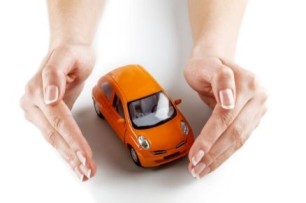
Complete guide to buy a short-term car insurance policy
Did you know that you can insure your car for a short period? Such as a few days or weeks. You must purchase short-term car insurance, often known as 'temporary car insurance.' Although it may seem strange, temporary car insurance is available, and people are already buying it.
Furthermore, short-term car insurance begins as soon as you pay for it. Some people may find that a short-term insurance policy is not ideal if they are unsure about their driving requirements. Let's take a closer look at a short-term car insurance policy in greater detail.
What exactly is short-term car insurance?
Short-term auto insurance can be valid for as little as a few hours or as long as some months, depending on the type of coverage you choose. It is possible to obtain short-term or temporary vehicle insurance coverage in some circumstances, such as when a person is not looking to purchase car insurance for more than a year.
How does short-term car insurance work?
Most Indian insurance policies fall into one of two categories: third-party liability and comprehensive insurance, with the latter being more commonly offered. In most cases, a standard automobile insurance term lasts one year. If one chooses to purchase comprehensive insurance, they will buy additional coverage through add-ons and benefit from other features. On the other hand, purchasing at least third-party insurance is mandated by law and gives the bare minimum of protection to the owner of the covered car in the event of an accident.
In situations where a person's need to drive a car is constrained by a specific time frame or a clear exit criterion, temporary car insurance may be necessary. Here, a person doesn't need to buy car insurance for a year because they don't drive a vehicle much. The time commitment could be anything from a few hours to a month or two at the most. Temporary auto insurance is uncommon in India, yet it is widespread.
Different types of short-term car insurance.
The coverage provided by short-term car insurance is minimal. It might be available in the following categories.
1. Rental car insurance:
Rental car insurance is the name given to the policy that protects a vehicle while it is being rented. Insurance policies for rentals typically include coverage for things like accidental damage and injury.
2. Gap insurance:
This insurance covers vehicles previously leased or financed through third-party financing. It provides gap insurance coverage in the event of a total loss, which is defined as damage that cannot be repaired. If the insurance provider compensates you for the fair market price of the vehicle, this policy will cover the difference.
3. Non-owners insurance:
Non-owners insurance is comparable to rental car insurance, although primarily available for private automobiles. People who borrow cars from family or friends are likely to buy non-owners insurance to protect themselves in the event of an accident.
Now that you've learned about short-term car insurance policies, you can make the most of a monthly car insurance plan to protect your vehicle. When you are only using a car for a limited time under the above three conditions, this is the most effective way of avoiding financial obligations. However, you should be prudent that not all car insurance companies offer this type of protection.
Click HERE to get more information about car insurance.
Disclaimer: The information provided above is for illustrative purposes only. To get more details, please refer to policy wordings and prospectus before purchasing a policy.
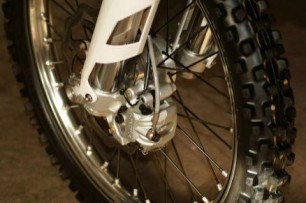
Let's understand the advantages of lightweight wheels
When you consider a bike's performance, many factors such as top speed, acceleration, engine capacity and power, mileage, accessibility of spare parts, servicing and maintenance, braking system, etc., contribute to a good outcome. Adding to this list are the wheels of your bike.
The wheels hold the tyres tightly to create a good balance and help steer the bike according to your driving directions and intensity. If you have a bike or are a bike lover, you would know that wheels come in different types, mainly lightweight and heavyweight. While each of these wheels has its pros and cons, how would we know which one is suitable for your bike?
This blog will discuss the benefits of lightweight wheels and how they add the "zing" to your motorcycle, giving it the winning edge.
So, let's understand the advantages of lightweight wheels to help you conclude which one you should choose and why.
1. We need to understand why weight matters:
To begin with, it is crucial to understand why the weight of the wheels matter. We can apply the fundamental theory of physics here. If anything is light and has lesser rotational mass (the level of resistance required to change its position or state), moving it forward is much easier. This is why it is convenient and requires less power from your bike's engine to move the lightweight wheels than the heavy ones.
2. Fuel consumption:
We all must opt for techniques to conserve fuel and make our vehicles more fuel-efficient. Lightweight wheels provide a way for your vehicle to use less power. So lesser the amount of power required to move the wheels, the less fuel consumed by the engine. There will be a minimal strain on the engine leading to minimising fuel usage.
3. Smooth movement:
Lightweight wheels, as already proved, are comparatively easier to move. In addition to the easy movement, lightweight wheels aid smooth turning and respond quickly, specifically in the corners. The smooth steering is a huge plus and excitement factor for bike enthusiasts. Besides improving gas mileage, lightweight wheels provide comfortable driving and a quality ride.
4. Need for speed:
Lightweight wheels are your best bet if you wish to achieve high speed while riding. They provide the comfort, quality and top performance of your bike. They show the immediate effect on the speed as you accelerate, thus achieving top speeds in a matter of seconds.
Get that adventure you seek by choosing the lighter wheels. But make sure you handle your motorcycle well, as lighter vehicles tend to be a little less stable. Safety is a huge concern, and you must adhere to all safety regulations. Gear up properly before you take your bike out for a ride.
We have already looked into how you need to be careful no matter the wheels you choose, and it is not always possible to anticipate any accidents or injuries you might end up in. Therefore, you must invest in bike insurance to safeguard it against the damages. You can browse all your options and deals before buying bike insurance. Select a comprehensive plan that offers the best coverage to your bike and comes with a reasonable premium.
Click HERE to know more about the benefits of bike insurance.
Disclaimer: The information provided above is for illustrative purposes only. To get more details, please refer to policy wordings and prospectus before purchasing a policy.

Try these effective ways to have a pimple-free and glowing face
Our skin and face bear a lot due to oil production, sweat, dust, and weather effects. Maintaining a clear and glowing complexion in these harsh conditions is a difficult thing. With social media taking centre stage in our lives, unreasonable beauty standards have been a constant.
However, one thing to keep in mind is that using multiple products might not be the path to glowing skin. Thousands of brands in the market promote expensive products to tempt you into buying them. Today we will look at a few inexpensive yet effective ways to have pimple-free and glowing skin.
1. Wash your face:
Pollution is a leading cause of breakouts and uneven skin. Research says that people who washed their skin twice a day saw a significant reduction in acne. Washing your face with a mild cleanser and cold water is the best way to clean your face and remove impurities.
2. Moisturise:
People often neglect moisturising when talking about acne-prone skin. However, moisturising can be significantly beneficial in the long run, no matter your skin type. Choosing non-greasy, light products that suit your skin type will help you in achieving glowing skin
3. Exfoliate:
Exfoliation helps get rid of dead skin cells that may clog pores and lead to acne. However, exfoliating daily can be harmful to your skin, hence stick to only once a week.
4. Consume water:
It’s no secret that water is the best medicine that solves a lot of your skin and health-related problems. Drinking at least 7-8 glasses of water is highly recommended as it helps wash out toxins from your body and reduces acne and scarring.
5. Avoid sugar:
If you have an excess acne problem, it is advisable to reduce your sugar intake as much as possible. A high glycemic index is a leading cause of acne.
6. Eat healthy:
Your skincare is only as effective as your diet. Having a well-balanced diet is crucial for clear and glowing skin. Consuming food items rich in vitamins and minerals is not only good for your gut health but also the health of your skin and hair. Eating clean food can show drastic changes in your skin.
7. Healthy Lifestyle:
There are countless articles on how leading a healthy lifestyle can positively affect your overall health. Regular exercise, sleeping on time and staying away from alcohol and smoking should be considered if you are aiming for a healthy life and glowing skin.
These are a few ways to give primary care to your skin and avoid pimples and dull skin. However, if the problem persists, consider going to a dermatologist. Your dermatologist will inform you about the products best suited for your skin type and any dietary changes that you may need to make.
Sometimes, the dermatologist might suggest getting blood work done to recognise any deficiency or allergies causing persistent acne and dullness. These tests and checkups can be expensive. Therefore, consider looking at online health insurance companies and choosing the best that equips you with the best healthcare treatment without stressing the huge costs payable for medical bills.
Click HERE to learn about online health insurance companies.
Disclaimer: The information provided above is for illustrative purposes only. To get more details, please refer to policy wordings and prospectus before purchasing a policy.

Understand these tips to secure your vintage two-wheeler with bike insurance
When you hear vintage, you instantly associate that with an old yet cherished classic piece. We have seen vintage lovers obsessing over them, from paintings to vases to vehicles. While vintage bikes are a preferred term, we cannot set aside that these items are old and dilapidated.
The vintage bikes are mainly out of production, and finding parts for them can be a tedious task. So how to take care of them? Should you get insurance for them? Here are a few ways to ensure your vintage bike with bike insurance.
Let's look at a few advantages of getting bike insurance for your old two-wheeler:
1. Since it's an old bike, you might face extra costs. Having insurance ensures that you don't bear expenses for the repair and maintenance of your bike.
2. With traffic and motor rules changing regularly, it is good to have insurance to avoid penalties
3. You can hassle-free renew bike insurance online and avail bonuses.
Many factors are considered before providing insurance for your bike. For example, the model, build, design, the conditions in which it is kept, how frequently it is ridden, etc. Ideally, getting a comprehensive cover would be an excellent idea for a vintage vehicle with many additional costs compared to a new bike.
Comprehensive insurance is a shield in case of accident, theft, or damage due to a third party. Moreover, comprehensive cover and add-ons can support you rest assured in the circumstances of natural calamities, riots, etc. Things that you should look out for before buying insurance for your bike are as follows:
1. Coverage:
Since everything is online off late, consider looking for a bike insurance renewal online. Look into various insurance factors and decide what is best suited for your two-wheelers.
2. IDV:
Being aware of the declared value for the current policy year is vital to know the current market value of your vehicle. This is the sum that the insurance will provide in case of theft or loss of the vehicle.
3. Utility of bike:
Since the market value of your bike depreciates every year, understanding how much you can use it will allow you to have an overall idea about the kind of coverage you would want.
4. Understanding your need:
Since you are the best person to determine what your bike needs, it is essential that you know what you expect from it. Do you want to keep it as a souvenir, or will you take it on the road? Insurance companies cater to various needs of the customer, so having a clear idea about what you need will help you understand what kind of cover your vintage two-wheeler needs.
So these are a few ways to ensure the longevity of your bike. With a plethora of options available in the market, having ample knowledge about different kinds of insurance can aid you in choosing the best for you and your bike.
The process of selecting the right insurance can be overwhelming. But with some patience and research, you will find the best options to renew bike insurance online.
Click HERE to renew bike insurance online.
Disclaimer: The information provided above is for illustrative purposes only. To get more details, please refer to policy wordings and prospectus before purchasing a policy.

Here's how to stop your car's wipers from squeaking
The rains might not dampen your spirits on a long road trip, but the high-pitched jarring sound from the wiper blades will definitely. The peaceful sound of the rain, the music coming from the sound system, or the lovely conversations are drowned out by the annoying and shrill sound of the wiper blades, enough to ruin the mood. Not only does it affect the driver’s everyone's spirits, but it also affects the driver's concentration while driving.
Wiper blades can become noisy under several conditions, but the most common is dirt between the windscreen and the blade. A dirty windscreen will hinder the ease with which the blade glides over the screen, thus producing squeaking sounds. Another reason can be a mismatch in the blade's speed and the rain's intensity. If it's not raining heavily, and your wiper blade is set to high speed, it prompts the wiper to repeatedly go over the dry screen, resulting in unpleasant sounds. Squeaking wipers can also indicate worn-out and old wipers, and you must consider investing in a new one.
In this article, we will address some of these problems and a few ways in which you can stop your car's wipers from squeaking.
1. Dirty windscreen:
A dirty windscreen can be a driving hazard. Light refraction, obscured vision, and distracting squeaky wipers can hinder the driving experience. Maintaining your windscreen is imperative for a comfortable and safe ride.
You can avoid dirt and dust from accumulating on your windscreen by washing it with a good quality windscreen cleaner and a sponge. Before taking out your car to drive, ensure that your vision is not compromised.
2. Improper installation:
If your windscreen was recently adjusted or installed and you hear squeaky noises, then most likely, the setup wasn't correctly installed. You might need to remove and reinstall the wiper to rectify the issue. If you are unsure how to set the wiper properly, it is best to consult a mechanic at a trusted service centre.
3. Improper use:
It can become fragile if the wiper is not used correctly or overused. A broken wiper is of no use. Hence it is better to change and optimally use the wiper in the future.
4. Unclean wiper:
Wipers are often neglected when it comes to cleaning and care. It is a relatively straightforward process to clean the wiper blades. Some water, sponge, and soap are all you need to clean the wipers. Remember not to overdo it as fibres or cloth particles may be left behind, which can cause friction, further worsening the situation.
5. Wiper rubber blades:
Wiper rubber blades can go through wear and tear over time, and you should regularly inspect them for any damage. You can change the rubber blades once a year or whenever necessary.
These were a list of things you need to take care of if you hear squeaking or shrill sounds from your wiper blades. Remember that the tiniest discrepancies in seemingly small parts of your vehicle can cause serious driving hazards and even result in fatal accidents if not given timely care.
Regular maintenance and timely change of parts are essential to keep your vehicle working efficiently. Take that extra step towards the safety of your car and invest in car insurance. Buy car insurance online and get a value-added advantage to prevent additional expenses you might incur in damages and repairs.
Click HERE to buy car insurance online.
Disclaimer: The information provided above is for illustrative purposes only. To get more details, please refer to policy wordings and prospectus before purchasing a policy.

All you need to know about road tax in India
Several state and national highways link India's vast geography. The country's roadways network stretches over 5 million kilometres while consistently increasing and is one of the largest roadway networks globally.
This vastly interconnected system is financed by the Indian Government that collects a sum of taxes from the citizens for the regular maintenance of the roads. Therefore, it is integral for every citizen to pay their taxes on time for the smooth functioning of the roadway system.
What is Road Tax?
When purchasing a vehicle, an individual must pay the base manufacturing price and a few extra charges. These additional charges typically include registration fees, relevant motor insurance, and a motor or Road Tax. The road tax is a sum of money paid while purchasing a vehicle in the state or country. The tax differs in all states as it is subjected to different tax structures and clauses.
A certain amount of road or toll tax is levied on vehicles using the state or national highways. These taxes differ according to state regulations, highway distance, and other relevant factors.
Who determines the Road Tax?
These Government bodies typically determine the road tax:
1. The state government levies the state vat tax, toll tax, annual or lifetime motor vehicles tax, and passenger and goods tax.
2. The Central Government levies the GST, customs duty, central excise, central sales tax, and other additional charges depending on the vehicle category.
Who has to pay the Road Tax?
While purchasing a vehicle, motor insurance is not the only cost that the individual must incur. The road tax is a compulsory tax that the individual must pay while purchasing a new vehicle. In India, this tax is charged on both private and commercial vehicles. Every individual who purchases motorised vehicles such as bikes or scooters, cars, auto-rickshaws, or even buses and trucks, needs to pay the tax irrespective of the vehicle's size.
Although the vehicle's manufacturing cost price primarily determines this tax, it is typically calculated considering other factors such as the motor or engine capacity, seating capacity, weight, and cost price. Thus, the road tax paid by every individual differs based on the vehicle as well as the state of purchase.
When and Where to pay the Road Tax?
An individual must pay the road tax for a vehicle during its registration. Depending on the state's mandate, the tax can be paid with flexibility, either one-shot payment or in yearly instalments. The vehicle owners may choose to pay the tax offline or online as per their convenience. If one is shifting their residence to another state, they need to re-register their car in the RTO of the new state and then repay the road tax.
To sum up, paying the road tax is an essential duty of every vehicle owner as a responsible citizen to help contribute and maintain the country's roadway network. However, being responsible for your vehicle's safety is equally important, and you can achieve this by purchasing a motor insurance plan that offers complete protection to your valuable asset.
Click HERE to know more about motor insurance.
Disclaimer: The information provided above is for illustrative purposes only. To get more details, please refer to policy wordings and prospectus before purchasing a policy.

Did you know about these side effects of excessive water consumption
Water is the solution to all problems, according to most people. And no doubt, it is indeed one of the most potent ingredients for a healthy life. Good skin, weight loss, better hair, or even mild headache, water is a cure for all. It is an essential resource for life to exist and flourish. However, excess of anything is poison. Similarly, excessive consumption of water can have several complications and side effects.
Surprising, isn’t it? This article is just for you if you want to know how overhydration can harm you. We will look at all the side effects that excessive water consumption can cause. Let’s take a look at different kinds of overhydration and their causes.
1. Overdrinking:
Overdrinking is a condition that happens when you drink too much water and your kidneys fail to flush out as much urine. This leads to water accumulating in your bloodstream, causing the dilution of essential substances.
2. Water retention:
This situation arises when the body cannot flush the water correctly due to various medical conditions. Several heart diseases and liver and kidney problems may cause water retention in your body.
The colour of the urine is a good indicator of water levels in your body. Pale yellow colour urine indicates the optimal amount of water in your body, while darker colour urine indicates dehydration. If, however, your urine is transparent, that is a clear indication of overhydration.
Now let’s take a look at the effects of overhydration:
1. Water intoxication:
When you consume more than five to six litres of water daily, you may start seeing symptoms of water intoxication. Some minor symptoms include headaches, cramps, spasms, vomiting, and fatigue. The more severe consequences of water intoxication can be seizures or blackouts.
If you start noticing symptoms like those mentioned above, rush to the nearest hospital. The excess amount of water in your body can lead to fluid build-ups in the cells leading to swelling. Swelling can lead to coma and seizures and can even be fatal if not given immediate medical attention.
2. Nausea or vomiting:
The symptoms of dehydration and overhydration are almost interchangeable. Since too much water is accumulated in the system, the body rejects the excess. This leads to diarrhoea or vomiting.
3. Headaches:
As the body’s salt levels deteriorate significantly, the cells swell. The swelling causes pressure inside the brain cells, causing severe headaches. Sometimes it can lead to clotting and troubled breathing as well.
4. Weakness and lethargy:
Like salt, the electrolytes dilute due to excess water in the body. Electrolytes are crucial when it comes to maintaining energy levels in your body. An imbalance in the electrolyte levels can lead to fatigue and weakness.
It can also cause muscle cramps and spasms. Your kidneys are working extra to flush out the unwanted water. This creates a hormonal reaction leading to drowsiness and feeling less energetic.
5. Swollen body parts:
Due to an increase in the water retention in your body, and the electrolyte imbalance, you may notice swelling in different parts of your body, such as the legs, lips and fingers. You may also notice a discolouration resulting due to hormonal changes caused by excessive water.
These are a few side effects of excessive water consumption. Excess water in your body can bring about various hormonal and other significant changes. Treatment for these should be taken under the guidance of a medical practitioner to avoid further complications. However, an immediate remedy to overhydration is the consumption of salts or electrolytes. Regaining the concentration of salt and electrolytes in your body can be a temporary cure.
Just like overhydration, there might be other issues in your body that you might not be aware of. Get an expert opinion to recognise any underlying issues and address them with proper and timely medication. Many online health insurance companies provide comprehensive coverage on all such check-ups and treatments that you might want to look into. Take advantage of this feature and benefit yourself and your loved ones.
Click HERE to know more about online health insurance companies.
Disclaimer: The information provided above is for illustrative purposes only. To get more details, please refer to policy wordings and prospectus before purchasing a policy.

Disadvantages of using duplicate spare parts for your car
Spare parts can either extend the life of a vehicle or cause it to fail instantly. Often fake replacement parts are created without the consent of the manufacturer. As a result, it is difficult to distinguish between genuine spare parts and counterfeit replacements. Furthermore, because fake parts are less expensive, consumers are more likely to purchase them to save money and fail to verify their validity.
The performance of fake spare parts is inferior to that of original replacements. You never know when they'll give out and do harm to the car's workings or its passengers. Purchasing car insurance can protect you from any damage caused to your vehicle. Always compare various new car insurance rates to find the best deal for you.
Here are some of the reasons why fake spare parts are dangerous.
1. Safety is at risk:
Fake spare parts may endanger not only the safety of the vehicle but also its passengers. To give an example, if you were to buy fake brakes, you might have trouble applying brakes on time. Fake engine spare parts can also result in a short circuit, potentially dangerous to the engine's functionality. As a result of these factors, counterfeit replacement parts are considered a safety hazard.
2. Additional expenses:
The majority of individuals believe that acquiring cheap spare parts will save them a significant amount of money. However, it results in increased expenditure because the fake spare component will often fail to function. Instead, authentic spare parts will save money because they will last longer and come with a warranty.
3. Has an impact on the vehicle's warranty:
Warranties are valid guarantees for a specific period. The carmaker agrees to repair any defective spare parts or repair the vehicle. Using fake spare parts may void the warranty completely. Another critical reason to avoid using counterfeit spare parts is to protect yourself from identity theft.
4. Safety concerns for other vehicles:
If you use forged spare parts, your vehicle's systems will not perform to their maximum capacity. This means you will be putting other people in danger when you drive.
5. Poor quality:
Given the heavily low price of fake spare parts, the companies are frequently forced to compromise quality and appearance. Moreover, the materials utilised are of poor quality. As a result, these parts are not constructed to survive for an extended period. Therefore, spending a little more money on authentic parts is preferable rather than settling for low-quality counterfeit replacement parts that pose a higher risk.
6. Other potential risks:
For various reasons, it's best to avoid using counterfeit replacement parts. Like, at higher speeds, fake tyres might deflate and fall apart. Fake oil filters may be ineffective in filtering, making the counterparts go dry. This will have an impact on the engine's operation. Installing cheap seatbelts and airbags is a terrible idea that can be life-threatening during mishaps.
In addition to reducing the vehicle's depreciation value, buying fake parts is a poor decision for various reasons. These faulty spare parts can betray at any point, making them more dangerous. So, as a sensible customer and a responsible citizen, and refuse to buy fake spare parts. Also, check out the most affordable new car insurance rates that can protect you in the event of an accident.
Click HERE to know more about the new car insurance rates.
Disclaimer: The information provided above is for illustrative purposes only. To get more details, please refer to policy wordings and prospectus before purchasing a policy.
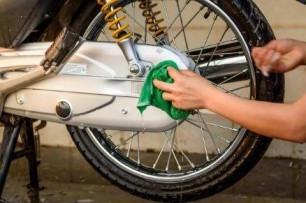
Here are a few important tips to undertake while taking your bike for a wash
If you have just come back from a long trip and your bike is covered in dust and looked nothing like you would want it to, then this article is for you. We will look into some of the essential things that need to be kept in mind when you plan on washing your bike to avoid making mistakes that might prove to be expensive later on.
Cleaning and regular maintenance ensure the long life of your two-wheeler. It helps you monitor any minute structural changes and avoid the accumulation of corrosive substances like road salt, grime, etc. Besides, needless to mention here, having bike insurance is non-negotiable, and you might want to look into some bike insurance online before reading on. A good bike insurance protects your bike with financial cover against any damages to it.
1. Cleaning kit:
Having your cleaning supplies in order before washing is essential to avoid latency and prevent the water from getting into places it shouldn’t. So, get your sponges, washcloths, spray bottles, microfiber cloths, and other items ready for ease of access and prompt use of them. Since each of these tools serve a unique purpose, it is advised to understand the purpose of each. E.g., Sponges are used to gently remove any dust particles while brushes are used to get into crevices.
2. Working condition:
It is crucial to have a good work area set up before washing the bike. Avoid washing it immediately after riding it. Let the engine cool down so that it does not go into a thermal shock when you wash it with cold water. Avoiding direct sunlight is also advised as it can dry up the soap faster, and any undue pressure can lead to scratches and watermarks on the surface.
3. Plug exhaust:
Ideally, the exhausts are structured to avoid water pooling, but having a rubber plug for your exhaust is a good idea. Make sure to plug the exhaust before washing the bike to prevent water from getting into the pipe and clogging the exhaust unnecessarily.
4. Choose your cleaning product wisely:
While many people believe that laundry detergent is a good choice for your motor vehicles, it is not the case. Products that are not explicitly suited for them can damage the paint and the structural integrity of the metal owing to the harsh chemicals present in generic detergents. Using foams can be a good alternative for washing brushes.
5. Do not use hosepipes:
Hose pipes can be the easiest way to water your plants, but it is not the best one when it comes to washing your bike. Directly streaming powerful jets of water can harm the paint job on your vehicle and can also lead to dirty patches.
Buying nozzle heads that can be attached to the tip of the pipe so that water can be sprayed harmlessly is a good choice. These are some things that you need to keep in mind before taking your bike to wash. Washing your bike for the first time can come with many questions. The tips above will help you in answering a few of those.
Owning a motorcycle is an excellent feeling, but it also comes with some responsibilities. Regular maintenance and proper servicing, albeit expensive, can ensure the longevity of your bike. However, having bike insurance promises that these services do not burn a hole in your purse. Therefore, without any delay, invest in bike insurance online, and provide the best care to your two-wheeler to cover more distances together.
Click HERE to know more about bike insurance online.
Disclaimer: The information provided above is for illustrative purposes only. To get more details, please refer to policy wordings and prospectus before purchasing a policy.
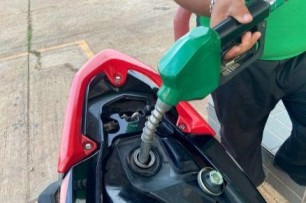
Here are the top three parts that can make your bike more fuel-efficient
With fuel prices skyrocketing now more than ever, it has become a rule of thumb to ensure that the vehicles you purchase or use, are fuel-efficient. Consumption of a limited amount of fuel can be an escape from burning a hole in your pocket. Plus, fuel-efficient vehicles help to reduce pollution and smog. So, making your vehicle fuel efficient can cause significant changes in your lifestyle, and you can contribute your part towards the biggest concerns of climate change.
Are you looking for suggestions for reducing your carbon footprint through less fuel consumption? Or do you wish to make your vehicle more fuel-efficient so you don’t burn through your savings?
This blog will discuss how you can achieve a more fuel-efficient vehicle using various techniques. Here are the top three parts that can make your bike more fuel-efficient. Let’s get started.
1. Give a rest to those breaks:
Your bike will consume less fuel and give you a better mileage if you unnecessarily avoid using brakes. Also, by preventing rash and aggressive driving, you save substantial fuel. Accelerating out of bounds and then hastily using the brakes will cause your vehicle to consume more fuel and power, thus diminishing the whole purpose of making your vehicle more fuel-efficient.
Always ensure you drive within the specified speed limit and abide by the traffic rules. This will not only help your bike stay in good condition but also prevent any accidents.
2. Be careful about the frequent gear change:
Along with the brakes, you must also ensure that you avoid changing the gears frequently and hastily. Driving at a constant speed will not only help you be safe on the road but will also consume less fuel, thus raising the fuel efficiency of your bike.
If you continuously operate your bike in the highest gears even when you don’t need it, it will lead to unnecessary fuel usage. Instead, always ensure that the operating gears are suitable for the road conditions you are driving in.
3. Take care of the tyres:
You must take care of the tyres to ensure that your two-wheeler consumes less fuel and maintains a good grip on the road. To take care of it, check if they are not underinflated. In the case of underinflated tyres, drag is created, increasing the friction, thus requiring more power and fuel to move the bike forward.
This unwanted drag can make it difficult for you to drive your vehicle. Properly inflated tyres reduce the drag, thus requiring a low power supply from the engine. This results in lesser fuel consumption.
Now, you need to keep an eye on the pressure and the amount of air-filled in the tyres. They must be inflated according to the default prescribed levels set by the bike manufacturer. Anything more or less than the mentioned limits can cause damage to the tyres and, in turn, the bikes.
Some other ways to make your bike more fuel-efficient include:
● proper maintenance of the bike and all its parts, using authentic and manufacturer-recommended spare parts in case of any damage
● driving safely and calmly
● purchasing the best fuel for your motorcycle
● check the air filters, and in case of any clogging, clean them
● regularly cleaning up your engine
We hope this blog provided valuable insights on making your bike fuel-efficient. Saving on fuel and spending extra during damages is not a wise thing to do. The best solution can be to purchase bike insurance to protect your bike against any damages, some of which might be sudden. Therefore, you must explore different options and buy the best bike insurance online to cater to your needs.
Click HERE to know more about purchasing bike insurance online.
Disclaimer: The information provided above is for illustrative purposes only. To get more details, please refer to policy wordings and prospectus before purchasing a policy.

Benefits of wearing orthopaedic shoes and quick tips for choosing the right ones
Just like any other part of your body, you must take care of your feet. Any ignorance can land you into severe issues such as extreme pain and discomfort while walking, hip problems, back problems, posture issues, hammertoe (pain issues in the joint of the middle toe), etc. The other common problem among women is metatarsalgia, a condition when the ball of your foot starts having pain and gets inflamed. This happens due to the constant use of high and tight heels.
Did you know there is a magical solution for all your feet problems? Orthopaedic shoes are one of the best options out there in terms of footwear. Orthopaedic shoes are made according to the doctor's advice and are accurate against foot problems. Foot troubles and conditions take quite a long time to heal; some might become critical if not taken care of initially. And orthotics are the best treatment that lasts longer and helps to heal. They act as a catalyst in your daily movement without any side effects.
Are you someone looking for more information on orthopaedic shoes? This blog will discuss the benefits of wearing orthopaedic shoes and quick tips for choosing the right ones. So, let's get started!
1. Boosts circulation:
Orthopaedic shoes are designed to improve circulation in the foot area instead of restricting the blood flow. The shoes help you adjust your feet, provide comfort, allow flexible movement, and improve the restricted blood flow. These shoes also provide immense relief from the pain in the nerves.
2. Improved support:
Suppose your shoes create discomfort while wearing or moving around. In that case, there is a considerable risk of severe foot problems like flat feet, metatarsalgia, and plantar fasciitis (pain in the heels due to flattening up of tissues that link the heel to the toes), etc.
These problems, if ignored, can go on to intensely affect your mobility and cause unbearable pain and discomfort. To avoid such grave health issues, wearing orthopaedic shoes provides an arch of support, proper padding, and cushioning for your heels.
3. Pain relaxers:
People who walk around ten thousand steps daily feel numbness and pain after a tiring day. Wearing orthopaedic shoes can help them ease into their routine and carry out their daily tasks effectively. It also prevents any redness and skin issues in the feet.
4. Say goodbye to the foot problems:
Orthopaedic shoes are your go-to solution against all kinds of foot problems like foot alignment, pain in the foot's arch, arch-related damages, etc. These problems can, over time, be corrected by the constant use of the right orthopaedic shoes. These shoes provide the best comfort, support, and cushioning to help your feet regain shape, alignment, and health.
While choosing the right orthopaedic shoes for your feet, do consult your doctors for the prioritising factors and dimensions required. Make sure to walk around in the shoes to analyse how the dynamics feel and be careful about the size. Buying the right size is very important. From formal to casual and stylish, there are multiple options of orthopaedic shoes.
That's a wrap on the benefits of wearing orthopaedic shoes and quick tips for choosing the right ones. As we talk about orthopaedic shoes and how they help keep your legs and feet in good health, it is wise to discuss health insurance for yourself and your parents. Specific problems come with age, and you must purchase the best health insurance in India for parents to ensure that they suffer no financial trouble as they grow older.
Click HERE to know more about purchasing the best health insurance in India for parents.
Disclaimer: The information provided above is for illustrative purposes only. To get more details, please refer to policy wordings and prospectus before purchasing a policy.

Follow these simple steps to detox your kidneys at home naturally
Kidneys are vital organs of our body. These two small, bean-shaped organs are located on each side of your spine and help remove toxins from the blood, balance mineral levels, and regulate blood pressure. The only way to keep your kidneys healthy is by staying hydrated and eating a balanced and healthy diet.
Your kidneys can detoxify independently, but sometimes they may not function optimally. Less-functioning of kidneys causes symptoms like fatigue, bloating, and trouble sleeping. Making changes to your lifestyle and creating a diet strictly based on kidney-friendly foods can assist the body's natural detoxification process. If you're experiencing a retain of water, a little more tiredness than usual, or elevated blood pressure, it might be time to give your kidneys and the rest of your body a little extra attention.
The following are the simple steps to detox your kidneys at home naturally.
1. Increasing water intake:
Drinking less water can cause dehydration, a build-up of wastes and acids in our body that clogs the kidneys. The only way to remove these toxic wastes from your body is to drink lots of water. The amount you need to drink depends on your age, body weight, climate, and physical activity. Medical researchers recommend drinking about 4 litres of water for men and 3 litres for women.
2. Including healthy foods in your diet:
It is one of the first steps to get your kidneys back healthy and in optimal shape. A healthy balanced diet is essential for the proper functioning of kidneys.
Consider including the following foods in your diet:
• Lemon juice – Lemon juice is acidic, increases the citrus level in your urine, and suppresses the growth of kidney stones. It also filters blood and other toxins. Include daily intake of diluted lemon juice to reduce the formation of kidney stones.
• Apple cider vinegar – Apple cider vinegar helps prevent oxidative stress of the kidneys. The citric acid in apple cider dissolves kidney stones. It also helps lower blood pressure, balance blood sugar, and increase levels of antioxidants, which creates optimum conditions for kidney health.
• Watermelons and pomegranates – Watermelon hydrates and cleanses the kidney. It is also rich in the organic compound lycopene, which improves cardiovascular health and ensures the well-functioning of kidneys. The juice of pomegranate contains potassium salts which are also effective in removing kidney stones. In addition, the astringent properties of a pomegranate prevent stone formation and flush out toxins.
3. Boost immunity by drinking kidney-friendly juices and teas:
You can supplement your fluid intake with dandelion, alfalfa, or green juices. They are effective in reducing the chances of kidney stone formation. Beet juices contain betaine, which increases urine acidity and prevents calcium oxalate crystals (a common constituent of kidney stones). Other effective cleansing agents include coconut water, cranberry juices, and cherries.
4. Avoid kidney-threatening foods and habits:
Avoid bad habits, including smoking, drinking, and excessive coffee intake. Limiting processed foods, added sugars, artificial sweeteners, etc., will help maintain the kidneys' overall health.
Taking good care of the kidneys is crucial to feeling fresh and active. Before trying out a detox process, consult a doctor or dietician to ensure that you'll be consuming enough electrolytes and calories to support your everyday metabolism. In addition, conduct regular checkups and screenings to ensure the health of your kidneys.
We would also recommend you insure yourself with a health insurance plan to safeguard your health against any possible health issues. There are a plethora of policies available online, each with its distinct perks. Browse through online health insurance companies, compare their plans, and choose the best to stay fit.
Click HERE to browse through the best health insurance plans.
Disclaimer: The information provided above is for illustrative purposes only. To get more details, please refer to policy wordings and prospectus before purchasing a policy.
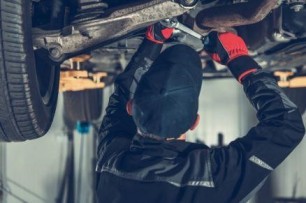
Best tips to check and maintain your car's suspension
The comfort and the ease of driving your new car are something that you always remember. However, with time, you start noticing small changes and don't feel the same comfort anymore. There could be many reasons for that. Wear and tear in the car seats, engine load, worn-out tyres, etc.
A car’s poor suspension could also be the reason for the growing discomfort. A fully functional suspension system ensures a smooth driving experience and keeps the vehicle under control. Over time the suspension system in the car experiences wear and tear and can take away from you a wholesome driving experience.
A suspension system comprises components such as wheels, tyres, springs, steering, etc. Different driving conditions govern these parts' longevity and wear off over time. To ensure that your car is working in proper condition, it is crucial to recognise any faults in the system and address them immediately to ensure safety while driving.
In this article, we discuss a few ways to check and maintain your car’s suspension.
1. Check air pressure:
Properly inflated tyres ensure that the chassis is protected from any damage. If they are not fully inflated, they can affect the vehicle's handling and performance. This can also be extremely dangerous when driving. To ensure that your tyre pressure is optimum, check it after driving every two thousand kilometres.
2. Wheel alignment:
Wheel alignment is another vital activity that ensures proper and risk-free driving conditions. The more challenging roads you take, the more likely your tyres are misaligned. Wheel alignment should be checked every two years or less, depending upon the kind of tracks you drive on. If you face difficulty while handling the steering or manoeuvring your vehicle, this indicates misaligned wheels.
3. Check power steering fluid:
If you enjoy the comfort of power steering or the hydraulic steering system, then maintaining and changing the fluids is part of your car’s regular maintenance. Check the level at least once a couple of months and replace it every three years. It is best to talk to a mechanic or refer to an owner’s guide to understand your car’s needs better.
4. Inspect shock absorbers:
If your car shudders or bounces abnormally when you drive, then these are indications of flawed shock absorbers. Make a visit to your nearest service centre to have the inspection of the shock absorbers. Ensure to get the shock absorbers checked after the first ten thousand kilometres and then annually. More challenging tracks and changing climates can cause wear and tear faster in the shock absorbers and might need to be changed sooner than mentioned above.
5. Accidents:
Slight irregularities can also affect the working of the chassis. If you have met an accident, hit a huge bump, or ran across a pothole, the chances are that some nuts and bolts could have disoriented from their original position. An inspection by a mechanic will help you rest assured and will not give you any trouble in the middle of the highway.
These are some ways to ensure that your car’s suspension works correctly. To avoid extra expenses or a complete breakdown, it is best to undergo regular servicing and check-ups for your vehicle. These services are a way of ensuring that every part of your vehicle is functioning effortlessly and efficiently.
Ignoring problems can lead to several damaged parts, which can be extremely dangerous when driving. Buy private car insurance India to ensure maximum safety and an amazing driving experience for your car. The right insurance boosts the longevity of your vehicle and undertakes expenses that might cost you a huge amount.
Click HERE to know more about private car insurance India.
Disclaimer: The information provided above is for illustrative purposes only. To get more details, please refer to policy wordings and prospectus before purchasing a policy.
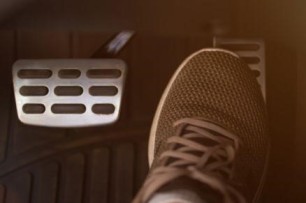
Five reasons your car undergoes acceleration problem
Car acceleration issues, apart from being bothersome, can also be dangerous. There are several reasons why your car might have a problem while accelerating. Technically, when you push the gas pedal, several components and sensors work seamlessly to move the vehicle forward and achieve that speed. Even a minor failure in this whole system can hamper your car's acceleration.
The car's internal combustion engine needs to breathe to accelerate quickly and develop the desired thrust and power. It compresses a specific amount of air and fuel ignited in the combustion chamber. The exhaust gases from the process are released through the tailpipe. If there is any disruption in the process, a loss in power will occur.
Engine performance has been controlled by the Engine Control Module (ECM) since the 1980s. The ECM uses the data from several different sensors to administer the combustion process. Issues in air and fuel delivery sensory problems are the leading cause of acceleration malfunctions.
Let's discuss the reasons your car may undergo acceleration issues in detail.
1. Check the air filter:
If you're facing trouble accelerating your car, you might need to check the air filter. The function of the air filter is to trap dirt and other impurities and prevent them from entering the combustion chamber. A clogged air filter prohibits the air from entering the combustion chamber, further affecting the process.
2. Keep the fuel system clean:
A clogged or dirty fuel system also disrupts power generation, thus affecting the vehicle's acceleration. The fuel does not reach the combustion chamber and therefore starves the engine and causes low power.
3. Fix the ignition:
Ignition issues can be one of the leading causes of acceleration problems. These systems are designed to ignite the air/fuel mixture by creating a powerful spark. However, poor-quality ignition wires or dirty power plugs can cause trouble in the complete burning of fuel in the combustion chamber. This results in the loss of power necessary for achieving quick acceleration.
4. No way out for the exhaust gases:
Exhaust gases from the collapsed catalytic converter get trapped at times which hinders the breathing capability of your engine. This inhibition builds up excessive back pressure and causes a significant loss of engine power.
5. Have a functional O2 sensor:
The oxygen (O2) sensor measures post-combustion oxygen levels in the exhaust chamber. A slow-reacting, damaged, or dirty O2 sensor is responsible for the quality of the air/fuel mixture, which impacts the engine, thus affecting the acceleration.
Some other reasons due to which your car undergoes acceleration problems are:
• A slipping clutch disk that doesn't wholly engage with the transmission to the engine.
• A dirty or defective mass airflow sensor (MAF) affects the engine's airflow, causing a strain in acceleration.
• The throttle plate position and movement are measured by the Throttle Position Switch (TPS). A problematic TPS data affects the air/fuel mixture engine speed and ultimately strains the acceleration process.
Now that we have discussed several reasons for an acceleration problem, it would be a wise choice to purchase car insurance to protect your vehicle and you against unanticipated troubles. Mishaps come uninvited, so you need to be prepared during the good to be safe during the worst.
Address the above problems related to acceleration and fix them at the earliest to ensure safe travel. If your car demands extensive repairing, don't refrain from visiting a mechanic. Instead, guarantee your repairing expenses with car insurance benefits and make your vehicle functional again.
Click HERE to know more about car insurance.
Disclaimer: The information provided above is for illustrative purposes only. To get more details, please refer to policy wordings and prospectus before purchasing a policy.

Five reasons why eating in your car is a bad idea
Distracted driving is one of the most common reasons for fatal car accidents. However, calling and texting are not the only forms of distractions for driving. When it comes to the most distracting factors while driving, many individuals overlook eating. If there's one thing we can all agree on, it's that we've all had to eat our meals on the go, or at least the majority of us have.
When behind the wheel, drivers must keep their attention on the road and adhere to all safety rules to be safe. People who eat while driving are multitasking and diverting their focus away from the road, putting multiple lives at risk.
Learn more about the unpleasant reality of eating in your car.
1. Reaction set back:
Your response time will be slower and delayed if your eyes and focus aren't on the road. Accidents might occur as a result of delayed reactions. Your brain and senses need to respond swiftly to sudden changes on the road. Therefore, you cannot afford to preoccupy your attention with other activities like sipping coffee or having a burger while driving.
2. Bug alert:
You're creating a biohazard food trap by treating your car as a makeshift dining room. Engineers compress a lot of components into a tight area, a plethora of even narrower spaces that only French fries and breadcrumbs seem to fit. It has the potential to become a gold mine for insects and other small creatures.
3. Health faux pas:
While eating in the car can be handy, it rarely equates to healthy eating. The common fast-food alternatives at drive-through restaurants are easy to devour mindlessly. However, mindless eating is incompatible with regular, more natural eating habits, so you're more likely to ignore your health and instead grab something else at your next stop.
4. Creates distraction:
When you eat while driving, you aren't paying attention to what's happening around you. You might be concerned about staining your clothes or spilling your drink. If your eyes are off the road, you may miss changes in traffic patterns or fail to see a car in your blind zone.
5. Hands off the wheel:
You'll have to take your hands off the wheel at some point if you're eating while driving. Whether opening a packaged sandwich or a lunch box, people who eat while driving will let go of the wheel, generating a disturbance.
Being the person behind the wheel, you cannot take even a slight risk of taking your hands off the wheel. You don't just steer the vehicle, but even the safety of you and your co-passengers.
Negligent driving is a rising issue nationwide, and it needs to be addressed with immediate actions by spreading awareness and implementing the rules strictly. It will also be challenging to claim unintentional damage if proven at fault while driving.
So, say no to eating in the car and maintain good car hygiene. Good upkeeping of the car interiors, regular dry cleaning, and car insurance are considered healthy car habits. So, follow the above tips and check for the best car insurance in India to be financially safe and secure your possession. If you want to live a better lifestyle, it's time to give up eating in your car.
To look for the best car insurance in India, click HERE!
Disclaimer: The information provided above is for illustrative purposes only. To get more details, please refer to policy wordings and prospectus before purchasing a policy.
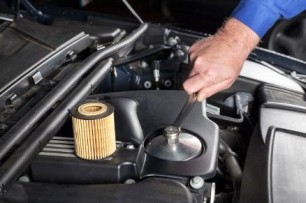
Complete guide on when to change car filters
The most commonly overlooked part of car servicing is changing the filters regularly. This task is a big mystery for many as to when is the right time to change a car filter and how to do it.
Timely change and maintenance of your car filters help optimise the motor parts' functionality and allow them to function efficiently. However, you need not be a mechanical whiz to notice the signs of when to change your car filters. This blog aims to help you understand the signs or hints your car gives indicating an immediate filter change.
1. Cabin filter:
A cabin filter is used to clean the inside of your car. This is done using air conditioning or heating vents. Clean air inside the vehicle is imperative for personal health and for preventing allergies and other respiratory problems. Unclean or damaged filters can block the airflow and cause visibility issues when defogging the windows.
Cabin filters must be changed every fifty thousand kilometres. Still, it is best to talk to an expert mechanic or consult the manual for recommended vehicle maintenance. If the air from the vents blows with less force or contains an unpleasant odour, your filters likely need to be changed.
2. Fuel filter:
The fuel filter helps keep dust, rust, and other impurities at bay. By removing the contaminants, this filter ensures the efficiency and performance of the engine. A clogged fuel filter can experience difficulty in the free flow of fuel, so the engine pumps harder than it needs to. It can lead to poor acceleration or a troubled start every time.
It is suggested that the fuel filters must be changed after fifty thousand kilometres. But these criteria often keep changing according to your vehicle's build and brand. If you start noticing decreased power, stalling, difficulty accelerating while going uphill, shuddering movements, and difficulty starting the engine, these are signs of a clogged fuel filter.
3. Air filter:
An air filter in the car is used to prevent insects, sand, debris, and other minute particles from entering the engine. Air filters ensure a good mixture of air and fuel to enhance the engine's performance. The cleaner the air in the engine, the more power the engine has. Good air filters also ensure better combustion, thus reducing fuel consumption. A clogged air filter leads to incomplete combustion and releases impure black smoke from the exhaust.
Air filters can be changed every twenty thousand kilometres. The interval can vary depending on the tracks you choose daily. You should reduce this interval if you drive on dirty or dusty tracks. Decreased mileage, strange noises, less power, black smoke, or strong fuel smell are symptoms of clogged air filters. You should rectify these issues immediately upon notice.
4. Oil filter:
The oil filter ensures continuous oil flow and removes dirt, impure oils, and metal particles in motor oil without hindering lubrication. All moving parts, such as the rods, shaft, etc., are protected from damage if the oil filter functions well. Change the oil filters between ten thousand kilometres to fifteen thousand kilometres.
Poor performance, metallic noises, and low oil pressure are some signs indicating a damaged oil filter.
We have discussed everything you need to know about the various car filters and their purpose. Proper maintenance and servicing are essential to keep your car in good condition. To ensure the financial coverage for your vehicle's care, always look for insurance options provided by the best car insurance company in India.
Click HERE to know more about the best car insurance company in India.
Disclaimer: The information provided above is for illustrative purposes only. To get more details, please refer to policy wordings and prospectus before purchasing a policy.
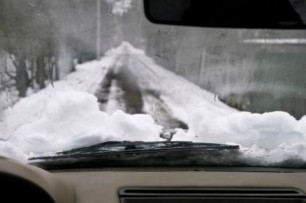
Driving through the snow? Here's what you need to know
Choosing to go for a drive while it's snowing outside may sound like an unusual option. So, ask yourself, "Have you prepared your car ahead of time?" A winter-ready vehicle should have enough tyre tread and air pressure, a vast tank of petrol, and a clean windshield.
Give yourself extra time to arrive at your location to avoid collisions. Do not take your hands off the wheel. Also, remember to get insurance from your choice of a motor insurance company and add a layer of protection to your car.
Keep in mind the following to lead a safer journey while driving through the snow.
1. Pay attention to the lights flashing:
If you turn and notice a flashing orange light, this is the stability-control system warning you that the vehicle is about to slip off the road. Ease off the accelerator until no more power is applied; this helps the automobile recover grip. Also, while making tight bends in town on icy or slushy roadways, do not accelerate rapidly. Always increase the throttle with steady momentum, so nothing unexpected occurs.
2. Install winter tyres:
This isn't a piece of driving advice; it's a survival suggestion. Winter tyres provide significantly greater grip in snow, sleet, and ice than even the most extraordinary all-season tyres. Installing a set of four winter tyres is the most intelligent thing you can do to boost your safety.
3. Handle the skids:
Skids, even large ones, are manageable, and you may quickly regain control of the vehicle. Firstly, don't panic—and don't slam the brakes. Instead, reduce your speed to avoid a front-wheel skid, which occurs when the front tyres lose traction, and the vehicle rotates in a broader arc than expected. In the event of a rear-wheel skid, swiftly move the steering in the same direction as the rear tyres are sliding. Keep your foot off the pedals. Steer back in the original direction when the rear wheels get a grip.
4. Drive extremely smooth:
The key component of driving safely in the snow is to be smooth with steering, acceleration, and braking. Why? Rapid control motions quickly unstick tyres with a fragile grip on the slick road. So every rotation of the wheel, a press of the brake, and movement of the accelerator must be careful, calm, and progressive.
5. Carry the necessary supplies:
Pack a snow shovel in your vehicle before you go, along with a bag of salt and a tow rope. The tow hook is located beneath the rear cargo floor, next to the spare tyre. Due to heavy snowfall, roads get severely affected, and tyres tend to get jammed, making the car halt.
Remember that your best chance for driving this winter is to ensure that your tyres sustain winter conditions. Snow can hamper the health of your car and make your journey troublesome. Stay adaptable, as it's best to pull over someplace to wait out the weather. Also, prioritise purchasing the ideal insurance plan from the best motor insurance company by considering your requirements and the benefits you can get from it.
Click HERE to head to the best motor insurance company.
Disclaimer: The information provided above is for illustrative purposes only. To get more details, please refer to policy wordings and prospectus before purchasing a policy.

Here is a list of five things that elders must take care of before planning a road trip
The passion for exploring does not fade with age. Many seniors start planning their post-retirement plans from an early stage. And, travel is one of the most exciting adventures they wish to do in their old age. After years of providing for their families, they deserve a break to live for themselves. The elderlies should experience the world’s magnificence at their own pace and spend some time enjoying the serenity of nature to rejuvenate their soul.
However, elderly adults should take particular measures before travelling. If you intend to travel with more aged folks or hook them up with a senior road trip group, here are some factors to consider for their security and wellbeing.
1. Health restrictions and physical evaluation:
You can never take too much precaution when it comes to health. It is critical to keep medications available, therefore, ensure they are conveniently accessible. Carry all prescribed medications with you. It is also a brilliant idea to supply over-the-counter medications on hand for various potential requirements.
2. Keep the trips short:
While creating an itinerary, plan the travelling and sightseeing accordingly. Avoid ending up bone-tired journeys. Instead, take frequent breaks while driving so they don’t feel tired. Choose destinations that don’t involve much walking and are ideal for aged people to explore. It is advisable to take frequent halts for the seniors to stretch their bodies and feel refreshed and energetic again.
3. Road conditions:
It is prudent to be aware of road conditions. Damaged roads can be a problem for people who are not used to travelling regularly. Also, keep in mind that older people’s bodies are vulnerable due to low bone density and cannot handle jerks like youngsters. Therefore, maintain a steady speed and avoid rushing.
4. Do not forget to pack the necessities:
You must bring a few basics with you: Warm clothes and any medical equipment such as asthma inhalers, wheelchairs, shawls, and so on. A cushion or blanket will also come in handy. Eating locally accessible food may not be the smartest choice in certain situations. As a result, bringing some of their favourite foods is preferable. But ensure that the food must be less spicy, less oily, easily chewable, and easy to digest.
5. Bring fewer belongings:
When going on a road trip, you want to concentrate on the journey, the magnificence of nature, and the locations you see. Taking valuables will add to your anxiety and reduce the pleasure of the vacation. It also presents unsafe conditions. And anyway, seniors who travel by car should be stress-free!
Follow the above tips carefully to ensure a comfortable trip for the elders. Checking on health and safety is paramount when travelling with aged people. To lean a little more towards the safer side, you must have insurance before planning the road trip. You are also required to invest in motor insurance as it is mandatory for anyone travelling via cars. So, before you start your trip, look for a motor insurance company in India and get your insurance covered. Remember to carry all the required documents with you throughout the journey.
To visit the best motor insurance company in India, click HERE .
Disclaimer: The information provided above is for illustrative purposes only. To get more details, please refer to policy wordings and prospectus before purchasing a policy.

Here is the special diet to keep you fit this monsoon
India is a country of diversity. Be its languages, cultures, traditions, customs, food, beverages, clothes, etc., the country provides you with a wide range of flavours linking back to the history and development of the region over time. The food palette in our country changes every hundred kilometres. And adding to the list are seasons. For every season, there are particular dos and don’ts regarding food.
The onset of the monsoon season creates a soothing vibe. The luring downpour, clouds, gentle winds, and food make the monsoon a season of endless cheerful moments. Cravings for fritters and tea are synonymous with monsoons. While oily and fried food gets our taste buds, it is also essential to be mindful about what you eat, especially during the monsoons.
This blog will discuss the dietary restrictions you must maintain to ensure you don’t fall sick. Here is the special diet to keep you fit this monsoon.
1. Oily food is a strict no:
While we all enjoy pakoras with tea in the lovely monsoon drizzles, it is not suitable for your heart and digestive system. Consuming too much oil can make it difficult for your digestive system to break down into energy-providing carbohydrates.
The excess fat can eventually be deposited in your body and, over time, cause pressure on your nerves which helps in circulating the blood. This makes it difficult for your heart to supply blood to the whole body. It can lead to severe health and heart risks.
2. Say no to spicy food:
Just like oily food, spicy food is not very gut-friendly either. It can cause indigestion due to excessive spice consumption and lead to problems like acidity, stomach ache, burns, diarrhoea, etc. Spicy food can severely impact your metabolism, slowing down the stomach’s ability to absorb all the nutrients from the food you eat.
3. Confused about leafy vegetables:
Doctors, nutritionists, and dieticians spend their entire lifetime advising their patients and clients to consume leafy greens. But you should avoid them during the monsoons. Why? The leaf moisture can cause it to go wrong, and the humidity makes germ infestation much more convenient and accessible.
If consumed in such a state, it can have severe health consequences. Apart from this, all the pesticides and insecticides might also cause some trouble due to the rain. So, to sum up, avoid eating leafy greens in the rainy season. If you still wish to consume them, ensure to wash and boil them thoroughly before cooking.
4. Be watchful about water:
If you or someone in your family consume water directly from the tap or the borewell, STOP. It would be best if you were careful about the water you drink. And stay even more watchful during the rainy season as the water might get contaminated and become unfit for consumption.
Drinking contaminated water poses high chances of diarrhoea, stomach aches, typhoid, cholera, stomach infections, and much more. Install a proper and home-friendly water treatment plant to ensure that the water you and your loved ones consume is safe to drink.
Other dietary tips include consuming tons of fluids and tea with special spices and herbs to help with sweating and the enormous humidity levels, which can cause dehydration and loss of nutrients. Consume spices like cardamom, ginger, turmeric, and cinnamon to help boost your immunity levels and combat any health issues (for example, cold and flu). Eating freshly cooked foods is another way to ensure that your diet contains all the nutrition you need during the monsoons.
Follow these tips and keep a check on your health without falling sick or suffering from any health conditions. Younger individuals tend to recover quickly due to a high metabolism rate compared to the elderly. So, it would be wise for you to purchase the best health insurance in India for parents after browsing through all the available options in the market. Find the one which caters to your needs in the best ways. Keep your parents’ health a priority.
Click HERE to know more about the best health insurance in India for parents.
Disclaimer: The information provided above is for illustrative purposes only. To get more details, please refer to policy wordings and prospectus before purchasing a policy.

Here are a few useful ways you can adjust your bike's idling by yourself
If you’re seeing this, you probably are wondering about a phrase that both seasoned motorcyclists and motorcycle marketers have mentioned several times: idling. What precisely is idling, and how can you adjust it by yourself? Let’s understand this.
What is idling?
Idling occurs when your motorbike engine is on and working, but you are not moving forward. Idling may also be defined as pausing at a stoplight with the motorcycle still functioning but not going forward. When your motorbike is idling, it is the period between igniting it and riding it.
Let’s dig deep into all you should know about idling.
How can we change the idle speed of an engine?
We try turning an alteration to raise or reduce the engine idle speed on turbocharged automobiles. Bikes manufactured now do not have such a feature. The idle speed of an engine is a pre-programmed function. We cannot directly modify the motor idle speed on the latest bikes. If the motor idle speed has to be adjusted, please refer to your bike’s manual to understand the recommended RPM first. The recommended idle speed of a bike depends on the type of engine and air to fuel ratio.
Does your bike need idling?
The most common purpose for idling a motorcycle is to “heat up” the engine. It helps in maintaining the engine properly circulated with gasoline, resulting in smooth riding. This is particularly frequent during the winter and in generally chilly areas all year. The idle period also varies according to the age of the motorbike. Older motorcycles idle for minutes, while current bikes idle for just a few seconds.
Yet another reason you should idle your motorbikes is that it is not always practical to switch the motor on and off when they are caught in traffic or need to get off their bike for a brief time.
How to adjust your bike’s idle?
It’s relatively simple if you do it right. If you have an older carbureted motorbike or an early fuel-injected motorcycle design, just use the idle speed adjusting screw. Twist and turn the screw slowly clockwise to raise RPM and anticlockwise to reduce RPM. This should be done when the engine has reached the average operating temperature. You may stop the idling once you feel that the engine has reached the desired RPM.
To summarise, idling on a motorbike occurs when the motor is left operating; however, the bike is not in motion. Idling is helpful to generate more RPM and attain more thrust. The motorists who desire constant power, usually get idling done or improved for a better experience.
Last but not least, being a motor-savvy person doesn't qualify you with all the protection for your bike. Instead, having a robust two wheeler insurance plan can help you overcome financial risks getting to your pockets. Numerous insurance companies offer two wheeler insurance online in India. Choose a suitable one and invest in it to ensure optimum financial security at the time of emergencies.
To browse two wheeler insurance online India, click HERE .
Disclaimer: The information provided above is for illustrative purposes only. To get more details, please refer to policy wordings and prospectus before purchasing a policy.

Visit these top stargazing sites in India to spend memorable nights
Who hasn’t desired to spend a night beneath the stars? The beautiful sky appears to be a canvas painted with countless twinkling stars. Stargazing gains a special place in the bucket list of most travellers. And rightly so. Who wouldn’t want to see the starry night while enjoying a mesmerising atmosphere? If you are travelling with a group, a random jam session under the open starlit sky will melt your heart. It’s a sight to behold.
Where can you find such places with stars lined up? Don’t worry. We can help you plan your next trip to the sites that offer you this jaw-dropping experience. Let’s get started.
1. Rann of Kutch, Gujarat:
Rann of Kutch in Gujarat is one of the largest salt marshlands on Earth. It offers the best crisp and clear night sky views. It encapsulates almost six magnitudes of stars, easily visible to the naked eye. All in all, this place is heaven in India for all the astrophile and stargazers. The time from October to February is considered the best to visit these marshlands.
2. Pangong Tso Lake, Ladakh:
Ladakh is a dream destination for the majority of travellers. And now, the iconic Pangong Tso Lake is an even more compelling reason that adds a feather to the hat. It is regarded as one of the best stargazing views in the entire country.
The lake is situated at an elevation of 4,225 meters. The starry sky outlines enhance the mesmerising night view from this lake. Trekking opportunities are available where you can set up camps and experience the view of the gazillion stars. Visiting Pangong Tso Lake in Ladakh from May to September would be the wisest choice.
3. Coorg, Karnataka:
Coorg is one of the most beautiful hill stations one must visit while touring the state of Karnataka. The waterfalls, coffee gardens and the lush green views can calm your soul and give you the peace you crave in the hustle of city life.
Giving you glimpses of mountain peaks and starry sky outlines, Coorg offers the tourists and adventurers multiple opportunities to camp in the forests where the tall trees form beautiful canopies, and the stars shine through. And if you are solely visiting Coorg for stargazing, make sure you plan your trip from October to March.
4. Spiti valley, Himachal Pradesh:
Himachal Pradesh offers some of the most beautiful views and tourist locations in India. And the high altitude makes it a perfect spot for experiencing the serene night sky views and capturing the beauty of snow-capped peaks.
At an elevation of 4270 meters, Kibbar or Kyibar in Spiti valley is a well-known point in Himachal Pradesh, specifically for stargazing. The best time to visit Spiti Valley is in the winter.
Various other locations in India offer stargazing opportunities, such as Nubra Valley in Ladakh, Sonmarg in Jammu, and Kashmir, Kashid Beach in Maharashtra, Jaisalmer in Rajasthan, and Shaheed Dweep or Neil Island in Andaman and Nicobar Islands, etc.
We hope this list will help you plan your next trip-solo or with dear ones to the sites where stars bring energy into life. Spend memorable nights and gasp at the wonders space offers.
As you consider travelling, how about getting general insurance for your travel? You deserve some relaxing time where you do not have to worry about sudden, unprecedented circumstances that can ruin your trip. And now, explore your options and get the best online general insurance which would cover your travel insurance in the best ways possible.
Click HERE to know more about the benefits of online general insurance.
Disclaimer: The information provided above is for illustrative purposes only. To get more details, please refer to policy wordings and prospectus before purchasing a policy.

Here are a few tips for maintaining the optimum tyre pressure in two-wheelers
Tyres are the least talked about part of a bike and usually get tossed to the side. But it is crucial to check your two-wheeler’s tyres regularly because they go through a lot. Whether you are riding on a metal road or rough surfaces —they have to be able to hold their shape. But, quick-fix solutions like tyre pressure can do so much for your tyres.
Imagine riding your bike, and you realise there's a flat tyre. This can interrupt your ride due to the waste of time. Also, sudden faults in the tyres are potential risks to the rider's life and even damage the bike.
Tips for maintaining the optimum tyre pressure:
Taking care of your bike's tyres isn't a big task. If you remain a little attentive, it's possible to avoid any breakdown-related issues. However, a big problem that one needs to avoid is the accident and financial worries attached to it. To deal with these, consider buying insurance plans. Getting a 2 wheeler insurance policy is like buying a shield for your two-wheeler.
And luckily, there are four tips to help you avoid tyre-related accidents while riding your bike. Maintaining optimum tyre pressure is crucial to minimise mishaps on the road.
1. Are your tyres correctly positioned:
When checking your bike, you should always check the tyres to see if they are in the correct position. Also, check for any punctures as sharp objects such as glass can hamper the quality of tyres. Make sure to move the tyre forward and back to check the whole surface thoroughly.
2. Check the tyre pressure:
One of the best ways to protect your two-wheeler is to examine the air pressure. When inflating your tyres, you can extend their lifespan and improve handling. Make sure to check the air pressure before every ride. As the bike heats up, air pressure can change, and it is essential to keep track of the air pressure level for your bike.
3. Recommended air pressure:
Keeping your motorcycle's tyres at the recommended air pressure is essential. Ask the service centre or check your bike manual to know the recommended tyre pressure, and ensure you maintain it. Also, to avoid sliding on wet roads, make sure your tyres are in good shape. Check the treads for wear and make sure they are not bald. If there is a decrease in an inch or quarter bald track, you should consider replacing the tyres.
4. Avoid maximum inflation:
When filling your tyre with air, be mindful that the sidewall states the maximum pressure. The recommended amount is always lower than the maximum. Excessive air filling can cause considerable damage to the tyres and increase the probability of tyre burst, creating a life-threatening situation for the rider and fellow drivers around him.
With an increasing number of road accidents and fatalities in India, 2 wheeler owners must be well-protected from any unfortunate mishaps. So, make sure you get a 2 wheeler insurance plan, drive safely, and stress-free. Also, use the tips mentioned above to take the best care of your bike’s tyres and leave no scope for negligence.
Click HERE to buy the best 2 wheeler insurance.
Disclaimer: The information provided above is for illustrative purposes only. To get more details, please refer to policy wordings and prospectus before purchasing a policy.

Let's understand how a central locking system impacts a car's safety
Since its implementation, the central locking system has become one of the essential safety features in a car. It's a combination of electronic and mechanical components that only allow access to authorised individuals.
Earlier, central locking systems in automobiles used a compressed air mechanism with separate vacuum reservoirs that triggered the locks of all four doors when the key was inserted and turned in a lock. Today's systems use wireless or infrared control, which can activate the mechanism from a distance.
In today's post, we will look at the functioning of the central locking system and how it impacts a car's safety.
The four main components of a central locking system.
1. Actuator:
An actuator is an electric motor that controls the car's central locking system. This component is built into the door and consists of a combination of mechanical latches.
2. Transponder:
It is a system built into the key's bow that determines whether the correct key is being used. As the key approaches the ignition lock, the transponder code is read. When the correct code is scanned, the electronic immobiliser sends a signal to the engine to permit it.
3. Remote Controller:
Remote controllers are increasingly being used in all cars. They are designed to replace the function of the key systems completely. The remote control includes electronic circuitry that sends coded instructions via infrared rays to the receiver located inside the vehicle to permit a keyless entry.
4. Start and stop system:
Unlike traditional ways, which required a key to be inserted into the ignition lock to start the car, engines are now being started using keyless systems where a transmitter – also serving as the central locking controller – is scanned into a reader in the vehicle. Later, the engine is started by pressing a button.
Safety advantages of central locking systems:
• The driver has better control over all the doors. The central locking system allows drivers to lock or unlock all four doors by pressing a single button. This is very convenient since the driver doesn't have to worry about unlocked doors while the car is in motion.
• Since the code is digitally encrypted, it is tough to make duplicate keys.
• If your key is ever stolen, you can simply remove the access right from the software on your phone. It connects with the car's digital lock and terminates access rights. Some automobile manufacturers even allow removing the access remotely.
• In more sophisticated systems, the car's door automatically locks itself after reaching a specific speed limit. As a result, no one, especially toddlers, can open the door by mistake —this helps avoid serious accidents.
• In case of an accident, a central locking system smartly unlocks the door so that help can reach you without having to break anything.
What else assists post-car accidents? Comprehensive car insurance. You can claim all the expenses involved in repairing and servicing your car under your car insurance policy's scope
A central locking system is essential for a family vehicle in practical usage. The ease of access and security that it provides make life easier for all automobile owners. Having a central locking system in your car provides extra security and brings down your car insurance premium. All the reputed car insurance companies encourage car owners to adopt convenient and safe practices. So, go for a central locking system in your car to enjoy a wide array of benefits and deals that you shouldn't be missed out on.
Click HERE to buy car insurance in hassle-free steps.
Disclaimer: The information provided above is for illustrative purposes only. To get more details, please refer to policy wordings and prospectus before purchasing a policy.
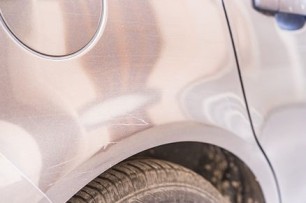
Let's talk about car fenders and how they are distinct from regular bumpers
As a car owner or enthusiast, it's prudent to educate yourself about vehicle parts. The most confusing of them are fenders and bumpers that keep your car safe. You may have heard the term "fender-bender" from drivers when they get into a car accident and wondered, "What does it mean?" Fender and bumper damages refer to physical damages to your cars, such as dents. If you have recently bought a new car, this article will help you understand the difference between these terms.
However, before diving into fender vs. bumper issues in detail, we advise you to buy new car insurance to ensure your vehicle gets adequate protection against accidental damages and a hassle-free repair and servicing.
What is a car fender?
The fender has been a part of automobiles for a long time now. It is the part of the car that covers the wheels. The section where the fender goes is popularly called the "quarter panel." The quarter panel is the rounded corner of the car that protects the wheels.
In older vehicles, the fender used to be more pronounced. Whereas nowadays, with the modernisation of the structural design of cars, fenders have taken a flatter shape, complementing the car's frame.
Car fenders are an essential accessory for your car, as they play a crucial role in keeping the vehicle and its occupants safe. As the car moves, the tires grab and throw anything that comes in its path, such as small rocks, mud, water, etc. Fenders provide resistance against wind and roadside debris while protecting surrounding areas and nearby people from projectiles from your tyres.
What is a car bumper?
A car bumper has a "bumping" function, which means it acts as a protective perimeter to the body of your car and prevents other objects or vehicles from impacting it. In simple words, it reduces the impact of a collision by absorbing minor shocks. You can find bumpers in two places in your car, one in the front and another in the back.
Car bumpers may not prove very beneficial in protecting your vehicle from high-speed crashes, but they are quite valuable for safety during minor accidents. They also serve to protect pedestrians from severe injury in case of a collision.
Just like fenders, bumpers have also reduced in their size. Previously, they were mainly used for decorative purposes, and people came up with new stylistic designs. However, they have gained quite much attention in the automobile industry in recent years. They are no longer considered decorative items but essential for safety purposes. The effectiveness of rear and front bumpers has saved the lives of numerous car accident victims.
Several car owners struggle to understand the parts of their vehicle, making it challenging to communicate with the mechanics about car troubles. However, educating yourself about them can make all the difference when it comes to the proper maintenance of your vehicle.
Similarly, think of investing in the security of your car and buying new car insurance to ease the concerns that can empty your pockets and leave you frustrated. Understand your role as a responsible owner and do whatever is necessary to keep your four-wheeled companion safe.
Click HERE to buy new car insurance with the best benefits.
Disclaimer: The information provided above is for illustrative purposes only. To get more details, please refer to policy wordings and prospectus before purchasing a policy.
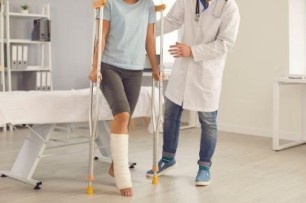
Useful tips to make healing and recovery of fractures fast and less painful
Of the many injuries we are familiar with, a fracture seems to be the most painful. Not only it is excruciatingly painful, but it also takes a long time to heal. A fracture can slow you down, even for basic day-to-day chores. The healing is given ample time to ensure that the bones are correctly aligned. But having said that, waiting for your fracture to heal can be tedious.
The healing of a fracture covers three main stages: Inflammatory, reparative, and remodelling. During the inflammatory stage, special cells assemble in the injured area and cause redness and swelling. This is an indication to the body to stop using the affected area. The first bridge between the broken bones is made here as a blood clot or hematoma.
During the reparative stage, a soft bone or callus takes the position of the blood clot and holds the broken bones together. This soft callus is not strong enough to handle weight and movement. Over the subsequent weeks, the callus becomes stronger and can handle movement.
During the final stage, the normal bone replaces the callus entirely, and over a few weeks, the bone is back to its original condition.
In this article, we will look at the few things we can do to accelerate the speed of recovery.
1. Restricting movement:
The more the movement, the longer it takes for the bones to heal. To heal properly and quickly, the best method is immobilisation. Castes and plasters are the most common ways of giving your bone the support it requires while also restricting any painful movement.
If the fracture is more severe, the doctors might rely on screws, plates, or wires to keep the bone fragments intact. Always remember to consult a doctor in case of pain or discomfort.
2. Improving food habits:
A weak bone can take longer to heal. Vitamins and minerals are vital components of a healthy body. The essential component for bone development is calcium. Include food items such as milk, cheese, and other dairy products that contain high amounts of calcium that your bones require. For your bones to absorb maximum calcium from these food items, your body also needs Vitamin D. Vitamin D helps the bones effectively absorb the calcium from various food sources.
Avoid smoking and alcohol consumption. People who indulge in these habits experience slower and more painful healing. Avoid food with high sugar and salt content. Excessive sodium or sugar removes calcium from your body and significantly slows down the repair of broken bones.
3. Physical therapy:
Physiotherapy can work wonders for bone repair. Blood flow is an essential part of bone healing. Therapy under the guidance of a physiotherapist can help you regain strength and a greater range of motion. There are also some exercises that you can occasionally do. This ensures that your muscles and bones do not get stiff over time while in a cast.
4. Post care:
After the cast is taken off, try not to test the broken bone. Do not put a lot of pressure on the bone to ensure if your bone has healed or not. As tempting as it may seem, give your bones time to adapt to the surroundings without having external support.
These are a few valuable tips you can follow if you want a faster recovery of broken bones. All the methods mentioned above are simple practices you can incorporate into your daily routine. Healthy eating habits, regular exercising, and timely body check-up are essential to maintaining an overall healthy lifestyle.
This article is also a reminder for you to do your health insurance policy renewal. Accidents can be expensive, with the medical bills skyrocketing. Hence timely health insurance policy renewal is non-negotiable to avoid stress due to health problems.
Click HERE for health insurance policy renewal.
Disclaimer: The information provided above is for illustrative purposes only. To get more details, please refer to policy wordings and prospectus before purchasing a policy.
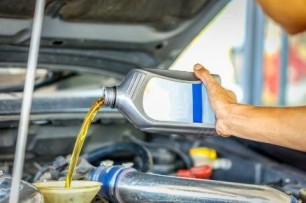
Important tips for selecting the best engine oil for your car
Regular car maintenance is a worthwhile investment since it allows a vehicle to operate more effectively and safely. Moreover, it helps avoid the need for expensive repairs in the future. Changing the engine oil improves the performance of your engine by spreading heat and keeping an appropriate temperature in the combustion chamber. In addition, you must remember that a well-maintained car helps you secure a car insurance renewal easily with added advantages like no claim bonus.
It is critical to use the proper lubricant for your vehicle to achieve optimal engine performance. There are many types of car engine oils available, and determining which one is best for your car is not an easy task.
How do you know which engine oil is best for your car? Here are the things you must consider.
1. Oil Viscosity:
When it comes to engine lubricant or engine oil, viscosity is a measurement of the thickness of the oil and the resistance to flowing. It is necessary to match the oil viscosity to the ambient temperature since thick oil does not agitate around the engine. Optimal viscous lubricant promotes energy efficiency while also preventing friction between components. Look at the care guide for your car's oil needs.
2. Analyse the previous engine oil's performance:
One of the essential things you should do when changing your engine's oil is to assess how well the prior engine oil performed. Changing your engine oil at specified intervals is vital to ensure smooth performance and safety.
Suppose the previous engine oil was refined, and there was no need for engine maintenance. In that case, you can use the same oil and brand without hesitation. It's best to choose an oil with the same manufacturer certifications as the one specified in your car manual if you can't find the one you need.
3. Type of car you have:
The type of vehicle is the most crucial consideration when selecting engine oil. There are several important factors to consider when buying engine oil for your car, including whether it is old or new, if it runs on gasoline or diesel, and if it has a high-performance engine or not, the brand, the series, and so on.
4. Follow the advice of the manufacturer:
It is suggested to follow the manufacturer's guidelines for engine oil changes in your vehicle. The importance of these guidelines becomes much more apparent when you own a new car that is still covered by the manufacturer's warranty. Use only the engine oil recommended by the manufacturer during this period because using a different oil could invalidate the warranty and affect your car insurance renewal.
5. Environmental factors:
The choice of engine oil is influenced by whether or not the vehicle is subjected to high-temperature conditions. Choosing an engine oil that can handle low and high temperatures is essential when driving in harsh climates.
It is critical to choose the appropriate engine oil for your engine to run at peak performance. Furthermore, the proper engine oil will improve the engine's performance and the car's overall fuel efficiency.
It is highly suggested that car insurance renewal be done before the due date to receive uninterrupted insurance benefits for a prolonged time. So consider these five factors the next time you're shopping for engine oil to get the best results.
Click HERE to get your car insurance renewal done before expiry.
Disclaimer: The information provided above is for illustrative purposes only. To get more details, please refer to policy wordings and prospectus before purchasing a policy.
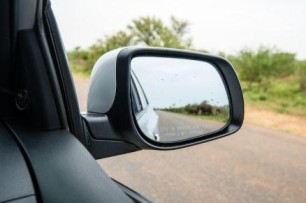
How to ensure maximum visibility by adjusting your car mirrors efficiently
Driving is a predominantly visual activity. Only learning the controls of the car is not enough. Good visualisation is one of the essential skills to develop when driving a car. Although you must concentrate on the road ahead, it is crucial to have a clear view of the sides and back of the car as well. Adjusting the side and rearview mirrors is vital to ensure a well-rounded view while driving.
Further, you should rely on emergency financial help by investing in dependable motor insurance India plans in case of road accidents, as it is always better to be safe than sorry.
All cars have blind spots; therefore, adjusting your rearview and side mirrors to the optimum can ensure maximum visibility and safety on the road. In this article, we tell you how to use your car mirrors efficiently and avoid the chances of accidents while driving.
1. Rearview mirror:
The rearview mirror, positioned next to the driver’s seat slightly above their eye level, is used to see the road behind and if any cars are approaching. The driver must adjust the rearview as per their height and comfort as soon as they get into the driver’s seat.
To adjust the angle of the mirror, sit up straight in a comfortable position, hold your head still, look into the rearview and shift it until the back or rear window is entirely visible in the mirror. Do this to avoid any blind spots. If more than one person is driving the same car, make sure to check the rearview mirror every time you get into the driving seat and readjust it to the best angle, in case it has been shifted as per another driver’s comfort.
When driving at night, flip the tab at the bottom of the rearview mirror that helps dim the light reflected by the headlights of the cars approaching behind you that may strain or blind you. In addition, some advanced car models enter and exit night mode to aid your visualisation.
2. Side mirrors:
Every car has a single side mirror on the left and right sides of the vehicle, respectively. As they are located outside of the car, it can be difficult to manoeuver them from inside. While many modern car models have levers or buttons that help adjust the side mirrors from the inside, some of them may not.
If your car does not have a lever or buttons to adjust the side mirrors, make sure to do so manually, right after you adjust the rearview mirror. Sit upright in the driver’s seat, first glance to one side, and adjust that mirror to an angle that helps reflect the side of the road. Shift it to a wide angle to get a comprehensive view of the side of the road. Repeat the same method for the mirror on the other side. If you have a lever or button inside the car, angle the side mirrors using it. The side mirror should provide a wide sideways view in just a simple glance.
The pro tip is to adjust the side mirrors to an angle that allows you to see right from the side of the road to the very back, including the approaching car, to maintain a safe distance.
Following these few tips to adjust the car mirrors can vastly improve your visualisation and assist you considerably while driving. It leaves very little room for errors or accidents. Apart from angling the mirrors, you must also check the wheel alignment, tyre pressure, oil levels, acceleration, and brake control to ensure safety before hitting the road.
Also, prioritise investing in motor insurance India plans and get the perks of financial coverage in case of loss or damages during accidents. Add value to your possession and get the best returns with assured safety.
Click HERE to know more about motor insurance India plans.
Disclaimer: The information provided above is for illustrative purposes only. To get more details, please refer to policy wordings and prospectus before purchasing a policy.

How mice threaten your bike and how you can prevent it
Indoor rodent infestations may have significantly reduced over the years; however, they still pose a threat outdoors. While we hear several stories about the damage caused by rodents and insect infestations in cars, we rarely hear about how badly they can damage two-wheelers.
Rodents, particularly mice and rats, are primarily attracted to areas where they can find ample warmth and hide. For them, bikes that have been stored away in garages for the long term make a perfect home. Although these mice usually take shelter in cars, bikes are a perfect warm spot for them, specifically in the winter months.
What are the threats caused to your bike by mice?
If you think rust is the worst thing that can harm your bike, you may be wrong. Mice and other such rodents can be far more damaging to your two-wheeler. From chewing on bike parts and wiring to building nests inside your engine, mice can cause terrible damage.
Mice are quick to chew into various parts of the bike, especially wiring. This can cause the engine and other parts to fail and is very difficult to fix. These damages incur high costs for the maintenance of your bike. In addition, it can be challenging to reach and repair the internal parts of the bike that have been damaged, causing unfavourable wear and tear in the process.
The nests created in internal parts of the bike are another major issue. Mice store food and other materials in the nests, which can clog the engine. They carry diseases and germs that can be detrimental to your health. If the nest is built near the air filter, there is a considerable danger of expelling rodent excrement every time you start the bike, leading to the spread of airborne viruses.
How to keep mice away?
Whether you are trying to get rid of the mice or are simply taking preventive measures to protect your vehicle, these few tips will go a long way in avoiding any more damage caused by rodents:
1. Mice try to find places that humans or other animals don’t regularly use. A stored bike in the garage or outdoors is one such place. The easiest thing to prevent this is to take the bike out for a ride frequently.
2. A simple mouse trap can help catch the ones that may be inside your vehicle. Keep the bike in a shed or enclosed area, set enough mouse traps around and underneath the bike, and check after a couple of days.
3. You can find many mice or rodent repellent sprays and medicines in local stores or online. Spraying these all over the bike will help chase away all the mice dwelling in and around the two-wheeler and prevent any more rodents from coming near it.
4. Block all mouse holes or hiding places in the garage where you store your bike. Making it a rodent-free zone is crucial. Avoid parking the bike in forested areas or lands with tall grass to avoid any future infestation.
5. Mice have a strong sense of smell and can be highly affected by it. Applying peppermint oil on tiny buds of cotton and placing them in various corners of the vehicle can help drive them away.
These tips may not undo all the damage caused to your vehicle, but it’s always good to be aware. So, be wise enough to have bike insurance so that you can recover the damage caused by mice. Also, if your bike insurance plan covers non-collision damages, you can easily file a claim.
Click HERE to get the best deals on bike insurance.
Disclaimer: The information provided above is for illustrative purposes only. To get more details, please refer to policy wordings and prospectus before purchasing a policy.

Plan to enrol your kids in these exciting activities and make the monsoon season enjoyable
The onset of monsoon is a gift for humans, animals, and plants. The lush greenery, the sweet smell of moist soil and the cold winds are a much-needed respite from the scorching summer months. But with all the monsoon goodness comes a set of challenges as well.
Children end up locked inside their houses, hoping for the pouring rain to go away. If you are a parent and you notice your kids growing increasingly impatient, this article is just for you. This article will look at all the activities you can enrol your kids in for a productive and fun monsoon season.
1. Take up a painting class:
Painting is an expressive art form. It is visually stimulating and allows your child to explore different colours and expression mediums. It gives your kids the opportunities to develop creatively and imaginatively.
This gives them the freedom to visualise and metaphorically paint the picture they want. You can help your children navigate the different types of famous artworks for inspiration. Later you can encourage them to join a painting class or workshops and learn to paint their imagination with passion.
2. Sports are always a yes:
In these distressing times of fast-paced technological advancement, we all have fallen sick and are easily prone to multiple health issues. Our bodies have become glued to the smart phones, and all you want is readily available with just one touch and tap of your phone. Rain can put a damper on your kid's physical activities.
Since being outdoors is a complete no-no, kids end up glued to screens. Indoor sport is your solution. Games such as table tennis, carrom, and chess are a few sports kids can play in the comfort of being indoors. Do not let rain be the reason your kids stay away from the fun.
3. Never say no to learning music:
Music, like painting, is again an expressive art form. The sounds stimulate your brain, which can then interpret different versions of tunes and rhythms. They help your child distinguish between various moods and emotions, thus enabling them to create their music. Notice how your kids pick up different notes from the song. Understand and encourage them to pursue various music skills and may also enrol in a music class.
4. We have all heard of abacus:
Abacus and mental maths tips and tricks will always be everyone's favourites. It doesn't harm learning quick tricks to help your child academically in the future. This enables the brain to enhance its analytical and logical power. Abacus classes can help your child improve their logical reasoning and make brisk calculations.
Ask your child if these activities interest them, and let them take the lead while staying indoors during the monsoon season. Parents must always focus on planning experiences to help their children be independent and happy. Don't let the rain wash out the excitement of your children. Monsoon can be fun, too, if activities are planned rightly.
Apart from the skills development, you should consider the plans for keeping the kids protected under any unforeseen circumstances which might arise during different walks of life. One of the best gifts your child can get is insurance benefits. As a parent, you must discuss your options and purchase the best general insurance for catering to your children's needs in the best ways possible.
Refrain from taking drastic decisions while buying general insurance. Take your time, do the best research, understand your child's requirements, and accordingly select the plan that is the best!
Click HERE to learn more about how purchasing general insurance.
Disclaimer: The information provided above is for illustrative purposes only. To get more details, please refer to policy wordings and prospectus before purchasing a policy.
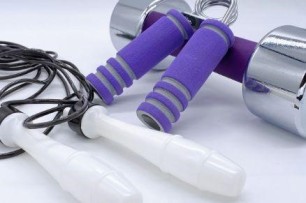
Let's understand the difference between strength training and weight training
If you have recently started your fitness journey or are planning to do it soon, you will come across words like “strength training” and “weight training”. But, what do these terms mean, and how much of it should you inculcate in your daily fitness regimen? More often, people primarily focus on weight loss or bodybuilding. However, an important thing to remember is to lose fat healthily. Overdoing your exercises and following unreasonable diets can have the opposite effect on your body.
This article will look at a few key differences between “weight training” and “strength training” to help you understand them better. Always remember to use weights under the guidance of a professional. Improper postures and overestimating your ability can lead to muscular and joint injuries. Let’s get started!
What is weight training?
Weight training indicates exercises that require the use of weights. Weights can be of various types; dumbbells, barbells, kettlebells, etc. Weight training is not limited to using gym equipment for your exercises. You can also make use of your body weight to practice weight training. Exercises such as push-ups, planks, and pull-ups are a few examples of using your body weight to see similar results to gym training.
Do not exert too much with excessive weights while doing weight training. Focus on how long it takes to fatigue your muscle with the most basic weight. Build your way up from there. Adding weights and gradually increasing the number of sets is a highly efficient way of building strength. If you experience pain while doing an exercise, it is best to leave that exercise. Take that up later with fewer weights.
Benefits of weight training:
● Increases strength of muscles and tissues
● Improves bone density
● Improves heart health
● It prevents aches in joints and back
● Aids in weight loss
● Defines and sculpts your body
What is strength training?
Strength training focuses on building strength and resistance. The basic purpose of doing strength training is to develop a strong core. It takes advantage of muscle contraction to build endurance and overall body strength. Strength training involves parts of weight training such as push-ups, lunges, etc. Equipment can vary from ropes and sleds to balance balls, and tyres. Strength training involves customised plans to stimulate and emphasise a particular area.
It is highly beneficial for people looking to improve their flexibility. Sportspersons undergo this training to enhance their skills and understand the chain of movement they will require in the game. Strength training plays a crucial role in helping people manoeuvre through these routines and gain optimal body functionality.
Benefits of strength training:
● Strengthens your body
● Boosts your metabolism
● Reduces fat
● Lowers risk of injury
● Helps in managing blood sugar levels
● Makes you more flexible
These are a few key differences between strength and weight training. One thing to remember while starting weight or strength training is to consult a trainer or a professional. Proper guidance is important for first-timers. Professionals can aid you in understanding the requirements of your body and customise a plan accordingly.
Irrespective of what kind of exercise you are doing, do not underestimate the power of a proper warm-up. Warm-ups prepare your muscles and tissues to prepare your body for an intense workout and decrease the chances of injuries. Putting in ten minutes of your time to do cardio or walking makes a good warm-up.
People join a gym or a yoga class to remain fit and healthy. However, investing in health insurance is another good habit of remaining aware of health. Health expenses can severely drain your finances, and reliable health insurance will help you avoid them. Take a step toward a healthier lifestyle and buy health insurance online in India. Enjoy the perks of purchasing a heal insurance policy online and get rewarded with an attractive premium.
Click HERE to find out how to buy health insurance online India.
Disclaimer: The information provided above is for illustrative purposes only. To get more details, please refer to policy wordings and prospectus before purchasing a policy.

Should you opt for a second-hand car insurance policy
Buying a second-hand car is a quick and easy way to get into the world of driving. Second-hand cars are a boon for families that dream of having their own car but find it difficult due to financial reasons. Research states that of the total car transactions made in India, around 55% are used cars purchases.
However, buying a used car doesn't mean you won't need insurance. Without insurance, you may find yourself paying even more for accidental damages and other repair or maintenance costs. You can save considerably on garage costs by investing in the right car insurance policy and capitalise on its benefits to gain healthy returns on your investment.
What is second-hand car insurance?
When you're buying a used car, the insurance history is essential — it shows you how much the owners took care of their vehicle and whether or not they were honest with their insurance claims.
After buying a used car, immediately call your insurance company. Registration is the first step in purchasing a vehicle. After you are registered, you have 14 days to transfer the insurance policy into your name.
Why is it essential to insure your second-hand car?
In India, car insurance is mandatory by law. However, third-party policies (also called liability car insurance) aren't sufficient to cover all damages. On the other hand, comprehensive policies provide more in-depth coverage.
As for your car insurance, choose a policy that includes comprehensive coverage. It will protect you against losses due to damages caused by human or natural calamities or the loss of your vehicle itself. Suppose a third party's death or injury occurs during an accident. In that case, their family will not be able to claim from you directly if you have paid the policy premium timely.
Pros of getting your second-hand car insured – The insurance policies cover you against the following problems:
• Natural disasters – Comprehensive car insurance covers your losses against damages caused by natural disasters like storms, floods, earthquakes, and other events beyond human control.
• Car accidents – Insurance protects you against the financial risks of injury or death due to car accidents, as well as damage or destruction of your vehicle.
• Robbery – As long as you have an accurate insured declared value, comprehensive car insurance will cover theft, vandalism, and other accidents resulting in total loss.
• Man-made catastrophes – You never know what could happen, but if someone else's actions cause your car to catch fire, you'll be covered. Likewise, artificial catastrophes such as vandalism, fire, self-ignition, and acts of terrorism will be covered under this policy.
Ignorance is never bliss when it comes to the safety of your car. In many cases, owners do not qualify for insurance claims due to a lack of awareness. Individuals must transfer the insurance policy to their name if buying or selling a second-hand car. The previous owner should also follow the procedure to ensure that legal problems don't arise in the future.
While owning an uninsured vehicle comes with several risks, one should also keep in mind that Indian law mandates that all vehicles must be covered under proper insurance.
Click HERE to know more about car insurance.
Disclaimer: The information provided above is for illustrative purposes only. To get more details, please refer to policy wordings and prospectus before purchasing a policy.
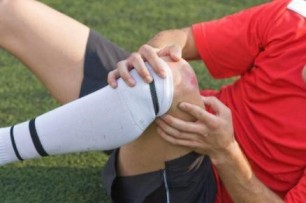
Let's understand a few common sports injuries and their effects
Sports are the preferred choice of physical activity by most people. It’s an exciting and fun way of incorporating physical activity into your routine. Spending at least half an hour a day playing can be magical for your mind and body. There is no better stress buster than playing your favourite sport.
If you are confused about where to start your fitness journey, playing a sport is a right start for you. However, are you worried about the many injuries that the sportspersons talk about? Fret not! We are here to clear the space of confusion and state all the facts and remedies before you.
This article talks about a few common sports injuries and their treatments for a faster and effortless healing process.
1. Sprains:
A tear or stretch in the ligaments caused is known as a sprain. As it can directly impact the movement of joints, even the menial tasks become highly painful. The most common are ankle sprain, wrist sprain, and knee sprain. Improper footing or a profound impact on different body parts can cause ligament tears or sprains.
Constant pain, swelling, redness, bruising, etc., are the general symptoms of a sprain. Sprains can typically take anywhere between a week to a month to heal fully. The easiest ways to fasten sprains' healing process are heat therapy, rest, and restricting movement.
2. Fractures:
Fractures are also a common injury that often occurs to sportspersons. Depending upon the severity of the injury, fractures typically take a month to six months to completely heal. Fractures can be cured using casts, padding, plasters, etc.
However, there are times when the doctor might suggest surgery to ensure that the bone fully grows back and is appropriately aligned. Misaligned bones can cause severe long-term implications if not fixed immediately.
3. Back and Shoulder injuries:
How often have we heard people complaining about their back giving them trouble? The spine is most susceptible to strain and stress during physical activity. Since your entire body frame is supported on your spine, giving extra care to your back is essential for staying fit.
Overlooking the stress on the back may lead to severe inflammation resulting in slip-discs and other back-related injuries. Treatments can vary depending upon the severity. Sometimes patients are recommended to take complete bed rest or undergo surgery.
4. Concussion:
In sports such as football and basketball, players can come across sudden high-impact injuries to the head. This traumatic injury can affect brain function. The symptoms can range from minor headaches, dizziness, drowsiness, and loss of consciousness.
Sometimes, these injuries do not show symptoms immediately and can take several months to manifest into other complications. Always consult a specialist to ensure that there are no severe injuries.
These were a list of the most common sports injuries prevalent amongst sportspersons. Remember to not over-exert the body whenever it shows signs of ache or strain. Sports and other physical activities are meant to be enjoyed while also helping you maintain an active lifestyle. But as the saying goes, "Excess of anything is harmful". Overdoing your practice can cause severe issues and aggravate the health of your body.
Always practice under the guidance of an instructor who can monitor your form and stamina. To safeguard yourself from the expensive treatments you might need during recovery, consider opting for the best personal accident policy in India. This way, you can rest assured that all your extra expenses are being taken care of. Never give up your spirit of playing a sport by surrendering to injuries. So, be cautious and continue passionately pursuing your favourite sport!
Click HERE to buy the best personal accident policy in India.
Disclaimer: The information provided above is for illustrative purposes only. To get more details, please refer to policy wordings and prospectus before purchasing a policy.

Six tips to have a better vision and healthy eyes
The world has gone digital, and given the current technologies coming in, there is absolutely no doubt that the digital era is here to stay. Everything in our work and personal lives is getting digitised by the moment. This indicates that our dependency on “screens” is going to rise. But how does that impact your vision?
Your eyes are your window to the world. It is one of the primary sensory organs which plays an integral role in your life. Unfortunately, the increase in the use of gadgets harms our vision. Your eyes are your window to the world. It is one of the primary sensory organs which plays an integral role in your life. Unfortunately, the increase in the use of gadgets harms our vision. Like a sound mind helps makes in a good body, healthy eyes sustain a healthy body.
But how to take care of your eyes in this world of soaring screen times? The following tips are beneficial for you to imbibe in your lifestyle to maintain a perfect 6/6 vision.
1. Your diet should be well-balanced:
The health of your eyes depends a lot on your food habits. The healthier food you consume, the better. Omega-3 fatty acids, lutein, zeaxanthin, zinc, and vitamins C and E enriched diet can fend off degenerative eye diseases like cataracts and Age-Related Macular degeneration (AMD). These nutritional constituents are necessary to maintain ocular surfaces. In addition, vitamin A for children is essential.
Make sure your diet contains the following foods:
• Fresh fruits and green leafy vegetables
• Berries
• In case you’re a non-vegetarian, then salmon, tuna, and other oily fish
• Lentils, eggs, beans
• Citrus fruits
• Seeds and nuts
2. Sun protection:
The ultraviolet rays from the sun have been proven to be harmful to the eyes. These rays can cause cataracts and Age-Related Macular degeneration (AMD), pterygia, and eye tumors. Avoid looking at the sun directly with naked eyes. Ensure that you wear the right sunglasses which protect you from UV-A and UV-B radiation.
3. Say no to smoking:
There’s no argument against the fact that smoking is bad for your health. It damages your respiratory systems and eventually deteriorates your whole body. There is sufficient data that proves that smoking increases the risk of AMD and cataracts exponentially. It also dries up your eyes, making it lose vision gradually.
4. Safety goggles:
To prevent any eye injuries, you must wear safety goggles whenever required. It doesn’t matter where you are; if your work deals with chemicals or airborne materials, you must ensure that you’re wearing your safety goggles. The same goes if you’re handling sensitive equipment or fireworks. Sports injuries can also cause eye damage. So you must wear a helmet and protective goggles.
5. Keep an eye on screen time:
Sitting in front of a screen can cause many eye issues, including headaches, strain, blurred vision, dryness, etc. Wear glasses or lenses, according to your power. Take breaks between your work. Increasing font size, adjusting the brightness, and lubricating eye drops are other ways to protect your eyes.
6. Regular checkups: Visit your eye doctor regularly for comprehensive examinations. If the doctor picks up anything during the checkup, you can eradicate the problem in the very early stages by proper treatment. This ensures that your eyes stay healthy in the long run.
Understand the vitality of having a good vision and healthy eyes before the situation slips out of hand. Follow the above tips and practice a few eye exercises to keep the blood flow constant in the eyes.
Now that we’ve discussed the tips to have better vision, another wise option to take care of your eyes and overall health is to buy health insurance, especially for the elderly of the family. So, browse through the several options and purchase health insurance in India for parents, which caters to their needs and enjoy life without any worries.
Click HERE to know more about health insurance in India for parents.
Disclaimer: The information provided above is for illustrative purposes only. To get more details, please refer to policy wordings and prospectus before purchasing a policy.

Essential post-workout tips for the fitness enthusiasts
Exercising is something that no one should ever compromise on. And if you are someone who religiously works out, you are already better than the sixty-four percent population of the country. But exercising is not any random daily task that you need to tick from your to-do list. It is a strict health practice that demands your time and dedication.
Exercise has stages that usually are overlooked. Ask any fitness enthusiast, and they will tell you pre-and post-workout care is as essential as the workout. The pre-workout phase includes a warm-up session. This is needed to warm up your body and get your muscles ready for a round of the extensive workout. Warm-ups before exercise avoid injuries that can later turn fatal. But, what do you do after your workout is done?
This article will take a detailed look at everything you can do post-workout to ensure optimum functionality and maximum results for your body.
1. Hydration:
Drinking too much water right after your workout is unsuitable for your body. Instead, it shocks the body with a sudden temperature change. Due to this sudden temperature change, the body uses energy to heat the water, which can slow down the rehydration process. Instead, take small sips after every set of exercises.
2. Stretching:
Stretching is an often-ignored part of workout routines. It takes barely 05-10 minutes. However, if you are running short on time, you can stretch on the go. You can easily do stretching such as lunge walking, overhead stretches, bicep stretches, side bends, etc., as you walk to the exit gates of the gym.
Stretching enhances flexibility and decreases muscle soreness after a high-intensity workout. If you miss out on stretches, it can lead to severe back pain and muscle soreness.
3. Restore your proteins:
Protein helps in muscle repair. You can obtain your daily protein intake from various sources such as eggs, curd, paneer, etc. Protein powders and supplements can be consumed as an add-on.
The amino acids in protein act as building blocks, essential for the repair and regeneration of muscles. Protein intake also helps with soreness that might follow the subsequent day after a heavy workout.
4. Include nutrient rich food:
Add a balanced and nutrient-rich meal to your post-workout diet for growth and recovery. Include foods with high content of vitamins, fibres, minerals, and carbohydrates for a well-rounded meal. For carbohydrates, you can opt for oats, rice, millets, etc.
Add spinach, beans, and cabbage for added fibre and nutrient content. Snacking on nuts is a smart way to ensure the intake of healthy fats, which are key ingredients to reducing inflammation.
5. Rest and Recovery:
If you practice heavy workouts, the general rule dictates that you should give your body a break of forty-eight hours weekly. Take the weekends off and indulge in light cardio such as walking, running, cycling, etc. Do not forget to add stretching to your rest days.
Our body is constantly communicating with us about what it needs. Listen to your body and take notice of the small changes that your body is responding to. Avoid straining if you feel like there is a possible chance of injury.
These are tips you can follow to ensure that your efforts and fitness enthusiasm do not go to waste. As mentioned above, overdoing exercises to the point of exhaustion can have severe implications. Always follow a routine under the guidance of a professional to avoid injuries and fatigue.
Remember that your body is unique and has requirements that are tailor-made for you. Sometimes, due to various reasons, our bodies are susceptible to injuries and accidents. Choose the best personal accident insurance to safeguard yourself and your loved ones in these situations. Don't allow injuries to stop you from hustling for a healthy lifestyle.
Click HERE to buy best personal accident insurance India.
Disclaimer: The information provided above is for illustrative purposes only. To get more details, please refer to policy wordings and prospectus before purchasing a policy.

Seven best gardening tips for beginners to have a perfect garden
The past couple of years saw an increasing trend of people inculcating gardening in their daily lives. As people were locked down as the pandemic peaked, having a little plant companion was the best way to stay cheerful during challenging times. Having greens around not only enhances the house's beauty but also purifies the air and supplies oxygen.
While taking care of plants might initially seem daunting, gardening can become therapeutic once you know all the little knick-knacks. Today we will look at the tips and tricks that will help you start your gardening journey.
1. Start small:
Setting up your garden need not be expensive. Use the take-out boxes and old paint boxes lying around your house to pot new plants. You can find the seeds/saplings and the soil at dirt-cheap prices in your nearby nursery. Or you can even use the seeds from the groceries in your very own kitchen.
2. Succulents:
They can survive extreme weather conditions and require almost zero maintenance. They only need direct sunlight for at least 3-4 hours a day and water once a week. Since they are used to surviving in low moisture conditions, you can breathe easy, knowing your plant won't die.
3. Own your kitchen garden:
Having a kitchen garden gives you the positive reinforcement you need. Plants like tomato, ginger, garlic, and gourds do not take up much of your time. You can invest in the soil and see the returns. Using your homegrown vegetables and herbs will be the best reward you deserve.
4. Prepare your compost:
All you need to do is separate your kitchen waste and put it into a pot explicitly kept for this purpose. Then, mix the waste and soil every once in a while to ensure the soil takes up all the nutrients from the waste. This way, you will have your compost ready! Mix this while preparing your pot for new plants.
6. Preventing insects and mealybugs:
As a beginner, you might face challenges while buying insecticides. Making your insecticide solution at home can be an option for you. Adding 3 ml shampoo to one litre of water in a spraying pump and spraying it under the leaves is an excellent way to get rid of mealybugs.
Using diluted rice water is also an effective solution to get rid of tiny insect infestation on your plants. These home remedies are more efficient and cost-effective than the other chemicals.
7. Tools for beginners:
Tools are used to toss the soil, remove weeds and cut out any infected leaf. These can be done with any readily available tools in our homes. But if you must invest in your gardening toolkit, then spades, gloves, and pruning scissors are required in the beginning. Later, you can add forked trowels, garden forks, etcetera, when you build your garden further.
Since most of us are beginners, we should be careful when dealing with soil and tools. Chances are we might be susceptible to infections and Paronychia. They are mostly treated at home, but at times you might need to get yourself proper medications for the same. Getting a personal accident insurance policy would help you rest assured in case of any such mishaps. Planting and gardening can add value to your life, and having a safety net in the form of personal accident insurance only adds value to your experiences. Here's to hoping that this list is just the right motivation to start your gardening journey.
For more details on personal accident insurance policy, click HERE .
Disclaimer: The information provided above is for illustrative purposes only. To get more details, please refer to policy wordings and prospectus before purchasing a policy.

Best tips to save money on your car loan
Most people think that buying a commodity like a car is a significant expense, especially if you have taken a loan. Understand that a loan is a liability, and if not managed properly, it could lead you to huge debts. Also, the maintenance and motor insurance can additionally cost more and affect your pockets.
Don't think that the market decides loan and interest rates, and you can do nothing to save the cost. In reality, the high-interest rate on the loan you borrowed affects your car loan. There are practical ways to save up on the loans of your car. Below is the guide to give you the best tips to save money on your car loan.
1. Constrain/control your credit:
Your credit history will directly affect the interest rate of the loan. If you have a low credit score, the lender may apply higher rates for your loan amount. Sort your credit report, and know that a good credit score will help you lock up the best deal on loans.
2. Navigate beyond the dealers:
Find ways to look beyond just one middleman/broker for your car loans. Getting advice or financing quotations from the dealer is not a bad option. But, when you shop for other things, do you stop at one halt and purchase? The answer is NO. So, do the same with your car loan options.
3. Buy an inexpensive car:
It does not sound like earnest advice, but at a point, it is proven logical. Getting a car is more about comfort and ease of life than merely a status symbol. Buy a reliable, best-fit vehicle that comes with lesser interest on the loan amount. Buying a car within your budget will also help you save up on motor insurance premiums.
4. Budget your down payment:
If possible, make sure to pay a substantial down payment on the purchase of the car. So, it will decrease the amount of interest on loans. Logically, the lower the principal amount, the lower the EMI will be.
5. Smaller tenure of the loan:
Opposite to the down payment, the tenure periods should be short. The lender will benefit from it if you have an extended tenure period. If you have a shorter tenure, you'll pay off the loan much faster. Also, interest components will be lower.
6. Count the processing fees:
The processing fee for the car loans is a one-time fee, and some banks waive off their prices during special occasions. So try to benefit from it by taking loans in that period. Also, make sure you don't get charged any extra in the name of processing fees, apart from general rates.
7. Go through the fine print:
One of the vital steps is to check all papers pertaining to the loan. Whether you take the quotation or make the final deal, read all the legal documents and understand them. Don't get trapped, and be conscious of the agreement while you are availing of a loan.
Stick to budgeting your loans. Be thoughtful with your financial position to consider the loan, interest, and ways to save up on your hard-earned money. There are ample ways to save the cost of your car loan payments. Don't rush the process and check every option before choosing the right one for your car. Like having good motor insurance comes with reasonable premium rates, a car loan can also be obtained with lower EMI if you make intelligent moves.
Are you looking for suitable motor insurance for your car? Click HERE .
Disclaimer: The information provided above is for illustrative purposes only. To get more details, please refer to policy wordings and prospectus before purchasing a policy.

Enjoy the mesmerising experience of watching fireflies near Mumbai
Did you know that fireflies glow in the dark to attract their mate and give out an honest evolutionary symbol that their babies are foul-tasting? Foul-tasting or not, these beetles have been attracting people for a long time.
People look up in fascination when these creatures dance in multitudes, trying to attract a partner from the opposite sex. So, whether you're trying to have a romantic getaway with your partner, trying to have a memorable trip with your family, or need some peace to meditate with nature, going to a place where you can see these stunning creatures at night is just the right vacation for you.
Back in our grandparent's stories, fireflies would be abundantly seen at the onset of every monsoon, busy attracting their mates. But due to the fairly recent change in the global climate, it's very rare to see this sight in cities. Here are 04 top destinations to see these mesmerising creatures.
1. Purushwadi:
Purushwadi is the most famous destination by far. It has been successfully holding a fireflies festival for many years. A tribal village situated about 200 km from Mumbai in the Western Ghats, one gets to experience the quaint village life along with the magic of the homestays and delicious food.
This has been made possible by local NGOs that work in rural tourism. It is a perfect getaway for city dwellers who want to experience peaceful rural life. It is easily accessible from Mumbai, taking about 05 hours by car.
2. Rajmachi:
As we welcome the season's first showers, one of the most exciting things this monsoon is to go on a night trek to Rajmachi fort. The Rajmachi Fort is about a 16 km trek from the Lonavala station, and you can spot fireflies after sunset.
The Shrivardhan and Manaranjan forts offer stunning views of the valley, making it a popular destination among trekkers. The surrounding Sahyadri ranges are perfect for spotting fireflies. Another brilliant spot for experiencing this is around the Udhewadi village.
3. Mulshi Lake:
At a small distance of 50 km from Mumbai, Mulshi is a beautiful village that boasts peace and serenity like nowhere else. Mulshi is a scenic beauty with a plethora of sights, like waterfalls, rugged cliffs, green forests, and meandering hiking paths.
In these emerald green forests is the firefly display around Mulshi lake. Spend overnight at the local homestay, experience the fireflies show, and explore the area at night.
4. Sandhan Valley:
Sandhan Valley is a stunning carved valley with a 200 feet drop in the Western Ghats. Known as the valley of shadows, it consists of a deep narrow, floored ravine between the two high walls of a mountain range.
The commuting route is practically the same as Purushwadi, but from Igatpuri, one must head towards Samrad village. To get a local flavour out of the trip, try to get a villager to accompany you on the trek and make simple arrangements with them for food. For a few years, villagers have been providing travellers with tents to see the fireflies.
This experience is sure to be a rewarding one for enthusiastic travellers. Seeing these bioluminescent creatures in their natural habitat will surely be a treat to the eyes, mind, and soul. These destinations are close to Mumbai and Pune, both bustling and hectic cities. It is best to drive up there or take a local train. The roads often leading to these destinations are narrow and rocky terrains.
If you are considering driving up there, you must look out for the rough patches. Before moving out on a trip, whether long or just a short one, always ensure that you carry all the car's documents. Seat belts must be on, and if driving at night, drive slowly! Also, get the best car insurance before starting a new driving exploration!
Click HERE to know more about car insurance policies in India.
Disclaimer: The information provided above is for illustrative purposes only. To get more details, please refer to policy wordings and prospectus before purchasing a policy.

Be adventure-ready and know these six tips before your next overlanding trip
Have you ever felt bored of your mundane daily routine and wanted a much-needed break? Overlanding helps you get away from all the stress of your work and refresh your mind and body, boosting the state of your mental health. It is a travel experience that focuses on a scenic destination away from the bustling city life. With this, you will get the chance to be closer to nature and give your body the rest it deserves.
Let's understand the tips that will make your overlanding trip memorable.
1. Plan well before you go:
You must decide on an adventurous overlanding route through the pleasant countryside and remote destinations. Do deep research about the destination, consider the weather predictions, and ensure favourable camping conditions. To avoid heavy traffic, accidents, or mishaps, you should know what particular amendments your car requires to suit the terrain.
2. Have basic survival skills:
Despite planning efficiently, mishaps occur, and you need to be prepared for any scenario. You might get minor scars or bruises while on the adventure, so carry a basic first aid kit to ensure you can treat minor wounds to avoid any infection. You might get stranded in an unfamiliar area, so it is always advisable to carry maps of surrounding regions in digital and physical forms. You should be capable of changing a tire in case of a flat tire. Adjust to the different weather conditions as your journey progresses.
3. Budget according to your needs:
Overlanding is a cost-effective travel experience. However, you might need to allocate your daily budget based on your needs. You can take inspiration from travel bloggers/vloggers and use similar tactics, or you can carry more resources to satisfy your needs. You should take into consideration your food, vehicle maintenance, and living expenses such as mobile connectivity. Save more by cooking food yourself and camping instead of staying in overpriced hotel rooms.
4. Comfortable dressing:
Wear clothes that are comfortable to be in for long durations. Pack appropriate attire for your activities and make sure it is compact. You can hand wash your clothes or use laundry rooms on your stops to clean and dry your clothes. It is also advisable to wear a roomy pair of good shoes that grip any terrain.
5. Carry essential equipment:
Carry equipment that protects you from excessive cold, wind, and rain, such as umbrellas, raincoats, jackets, gloves, and earmuffs. Emergency dry, nutritional snacks and bottled water should be a part of your travel inventory. Additional tools such as flashlights, fire extinguishers, and gas always make your trip must also be part of your travel checklist.
6. Take precautionary measures:
Safety is an aspect that you can never compromise with when planning an Overlanding trip, especially if you're travelling solo. During the journey, it's just your car and you who are for each other. So, keep spare wheels that fit your vehicle in case of a flat tyre. As roads are a package of undesired events, it is always advisable to get car insurance so that you return with good memories and no financial worries. Opt for online car insurance if you haven't bought one, hit that road less travelled and enjoy that overlanding adventure of a lifetime!
Overlanding journeys expose you to pure and unaltered experiences and introduce you to life in a way you might not have thought of. These trips also boost your self-growth as you learn to make arrangements to sustain yourself in any situation.
Click HERE to know more details about car insurance before you set on a trip.
Disclaimer: The information provided above is for illustrative purposes only. To get more details, please refer to policy wordings and prospectus before purchasing a policy.

Why is two-factor authentication important to assure additional safety
Two Factor Verification (2FA) is recognized by many names, such as two-step authentication, two-step verification, and even multi-factor authentication (MFA). In simple terms, to get access to an app, platform, or network, the end-users must ascertain their identities using two forms of IDs. One is their password, and the other factor can be anything, an OTP, biometric scan, a security question, etc.
2FA adds an extra degree of security by safeguarding user IDs and preventing cybercriminals from accessing online resources. Cyber attackers have to confront an additional barrier to access with 2FA in place. Even if hackers know a user's password, they must guess the second factor, which might be challenging based on the authentication factor allowed.
In today's post, we'll go over how this technology protects individuals and organisations from people with malicious intents out in this world headed for Metaverse.
1. Looking beyond passwords:
Generally, offices use single-factor authentication (username & password) to grant access to their services. However, these procedures are insufficient to protect users nowadays.
This is due to users often not adhering to best practices when setting a password. Although strong password rules may help companies reduce these habits, other offenses, such as writing down passwords, using the same passwords across various accounts, or discussing passwords with others, are common challenges at the workplace.
This is where 2FA comes in. It is tough to bypass a second authentication stage as it generally involves biometrics (which can't be faked), TOTPs (Time-bound and ever-changing), etc.
2. An efficient way to fight phish based attacks:
Phishing is a form of cyber assault in which people with malicious intentions send a bogus email that mines for sensitive data. It is one of the top web hazards confronting businesses today.
Phishing emails seem to be sent by respectable organisations and often invite people to log in to their social network, bank, or business accounts. Unfortunately, many consumers are duped by the nature of these emails and input their credentials, giving their passwords and access to sensitive information to hackers.
Let's say you have fallen for the phishing trap, and the hacker has your password. They will try to log in to your account and fail because the second layer of authentication will be waiting for them. One wrong attempt on the second stage will prompt you about a possible breach. You can immediately reset the passwords.
3. A single compromised account might be the tip of the iceberg:
If the same password or its variants are used for multiple accounts, the hacker may acquire access to all of them. Since a typical user handles over 80+ accounts on average, there's a potential risk the hacker will access other credentials. They may steal critical information from inside and even sell the hacked credentials.
If hackers manage to crack into your account and try to work their way to other accounts, they will not be able to get in.
In the future, companies plan to include Geolocation, device type, time of day to assist if a user should be authenticated or restricted. Furthermore, behavioural indicators can be discreetly tracked in real-time to enable continuous authentication. These are things for the future, though. Use the 2FA technology available to secure your online identity from hackers.
Another great weapon to add to your arsenal is public liability insurance. It covers you against identity theft, cyber extortion, unauthorised transactions, and numerous other cyber hazards. In today’s technologically equipped world, your life can be on a digital marketplace in just a few clicks, even ensuring system security is made easy online. Compare different public liability insurance prices and select a plan that matches your requirements without being too heavy on your pockets. Trust us; it is well worth it.
Consider checking the public liability insurance prices HERE.
Disclaimer: The information provided above is for illustrative purposes only. To get more details, please refer to policy wordings and prospectus before purchasing a policy.

Here are a few tips that you should know before you go for a two-wheeler test drive
Researching what type of bike to purchase and comparing its features is not enough; getting a test ride of your chosen model is equally important. It is a thumb rule not to buy a vehicle until you take a test ride. Test driving helps you to determine if the vehicle model is the right choice for you.
Getting reviews about a product is undoubtedly advantageous, but remember not to make up your final opinion solely based on that. Do not decide upon a model until you have tried the two-wheeler yourself.
Here are ten quick tips you should keep in mind while testing a two-wheeler that you are looking to buy:
1. A new bike will be in better condition than a test bike. Not all dealers make an effort to keep the test ride motorcycle in its excellent shape.
2. Make a mental note of where and what the controls are. Naturally, every bike has a different build and console. Therefore, before you hop on a vehicle, it is vital to know its layout. It is necessary to understand how the new bike will complement your daily commuting needs.
3. Pay attention to how the basic components impress you. That includes the comfort of its seat, clutch force, gear change efficiency, effortless braking, smooth acceleration, and overall performance.
4. Examine the effectiveness of brakes. But do not make a sudden emergency stop to do so. A modest stop or two will also give you a more precise idea of its capacity.
5. Instead of being influenced by the riders in advertisements, consider performance in the context of your daily travel. It is always a good idea to believe in your instincts and judgments rather than what others say.
6. The engine is the heart of any vehicle. It is crucial to verify engine performance thoroughly before making the final decision. Observe the bike's reaction to the throttle at a low speed in high gear and vice versa.
7. Don't forget to check its off-roading capability. Road conditions you cover regularly might not be as good as the ones near the showroom. Hence, ride through some unsophisticated paths to check for the sturdiness of the two-wheeler.
8. Look for ease of use as per your requirements. You cannot gain the confidence to handle a bike right away. Therefore, check to see if the bike's features respond to your expectations without any trouble.
9. Note down what doesn't please you. Then examine whether those things are changeable or replaceable.
10. Apart from examining the bike, ask these questions to your dealer; What does the warranty cover? What is the maintenance schedule for the motorcycle? What is the cost of essential services at the dealership? Is insurance covered, and what is the price of annual 2 wheeler insurance online?
Remember to be entirely sure about the bike before making a purchase. And If you're still indecisive, ask to take the two-wheeler for a second test ride or until you are confident. Once you've chosen to go from test riding to buying, be sure you have the right insurance coverage for riding your newly bought two-wheeler on the roads. Get Magma HDI's 2 wheeler insurance online with the additional benefits to give your two-wheeler lifelong protection.
Check out the best 2 wheeler insurance online HERE .
Disclaimer: The information provided above is for illustrative purposes only. To get more details, please refer to policy wordings and prospectus before purchasing a policy.

Try these seven tips to safeguard your devices from spammers and hackers
We utilise the internet in almost every aspect of our lives, looking for information, shopping, banking, online learning, playing games, and communicating with family and friends via social media. The data transferred over the internet could include banking and other financial records and medical information—all of which we desire to keep private. However, if the device is not protected, it may lead to malicious activities.
Hackers can access your most sensitive information with their vicious mindset. Consider purchasing a public liability insurance policy to protect the commercial business from various first and third-party liabilities. Here are seven suggestions to help you protect your office computers and other mobile devices from malicious intruders.
1. Antivirus:
Antivirus software protects your computer from malicious code or malware that could cause your operating system to malfunction. Get security solutions that support numerous technologies if your operating system didn't come pre-installed with it.
2. Use private Wi-Fi:
Avoid using public Wi-Fi on your device to prevent threat actors from gaining access to your device and downloading private files. Most public Wi-Fi hotspots don't encrypt data, so your connection to the Wi-Fi is visible to others. This poses a major threat to your device.
3. Complex password:
Obtaining a set of login and password combos from one source and trying those same combinations elsewhere is one of the easiest ways for hackers to get information. Therefore, the most important strategy to prevent network breaches is to use complex safe passwords.
4. Two-factor authentication:
Passwords are the first line of defense against cybercrime but adding a second layer of protection increases security. Many websites allow you to use two-factor authentication, which increases safety by asking you to verify your identity using at least two separate approaches.
5. Avoid spam mails:
Phishing attacks are when hackers send messages that appear to be authentic to deceive you into giving personal information. Always be wary of such emails from unknown senders, and never click on links or open attachments in them.
6. Substantiate app permission:
When you install an application, it will most likely ask for access to several of the device's most important features, including the camera, email, contact list, photo gallery, and location. If any of those features appear fishy, then disallow.
7. Be up-to-date:
Smartphone makers and app developers issue software updates regularly, which frequently contain security enhancements. So make sure your smartphone's software is up to date to avoid the risks of breaches.
You can protect your PCs and network from security breaches by using a combination of security technologies and best practices. The internet is a treasure trove of data and connections. If you use it with caution, you'll have a fantastic and safe time.
In today's dynamic business world, no matter how strong your corporate structure is, it is subject to a range of risks. As a result, it's a good idea to get public liability insurance policy to cover your needs and counter the damages caused by attacks due to vulnerabilities.
To look for the public liability insurance policy, click HERE!
Disclaimer: The information provided above is for illustrative purposes only. To get more details, please refer to policy wordings and prospectus before purchasing a policy.

Trendy international cuisines becoming famous in India
George Bernard Shaw had once said, "There is no love more sincere than the love of food". And for Indians, this relationship is above and beyond that. They don't just love food, they worship it. As the world is growing more connected, Indians have developed a unique relationship with international cuisine from across the globe.
To give your taste buds a chance, here is a list of trendy international cuisine famous in India that you shouldn't miss out on!
Italian cuisine – get obsessed with pasta and risotto:
Most Indians are already familiar with Italian recipes like pizza, pasta, or risotto. Indians can't go days without eating a pizza which is almost like their comfort food. Some are seeing this paradigm already shifting; imagine restaurants are experimenting with tandoori pizza! Besides pizza, people are even hyped up about pasta and lasagne.
Korean cuisine – spice things up:
Koreans have our hearts. From their music to food, everything about their culture is impeccable. Korean cuisine mainly consists of rice, seafood, and vegetables. Some of the top Korean cuisines that should be on your menu include Kimchi, Bulgogi, Korean fried chicken, and Red rice cakes, also known as Tteok-bokki.
Japanese cuisine – feel the magic of the sea:
People in India are crazy for spices and flavours, but they would never think twice when it comes to Sushi. This delicious combination of both fish and rice with some special sauce is becoming a favourite among modern dinners. If you are a fan of exotic vegetarian dishes with noodles, you won't miss out on some of the Japanese restaurants in India.
English breakfast and high tea – a western culinary influence:
Like a favourite story, who knew Indians would always love something from the UK so much. Tea is India's most beloved beverage, which has become a tradition as an evening high-tea in fine-dining restaurants. Pancakes are another delicacy ruling over everyone's heart that now Indians are shifting from idli-dosa to pancakes for breakfast.
Thai cuisine – taste happiness:
Thai food is one of the few global cuisines that Indians genuinely love. Thai food is a mixture of so many ingredients altogether, and Indians love all the hidden flavours and aromatic elements of it. Today, Thai curry has become a part of most Indians' kitchens.
American cuisine – a heavenly delight:
And always keep the best for the last. Indians have loved American cuisine for years now. With numerous American fast-food chains opening their outlets all over the country, American food culture has gained popularity among both young and adults. Chicken wings, tacos, steaks, and salads are the new favourites today. Almost everyone's go-to food is now cheeseburgers and sandwiches.
Food is perhaps India's biggest obsession today. If you are a foodie and looking for some famous cuisines, there are endless options you can find. You can even participate in several International Food Festivals to delight yourselves with the best food from around the world. But, also remember that having a well-balanced food with appropriate calories and enough nutrition is a key requirement for good health. A growing number of restaurants, health consultants, fitness experts and online health insurance advisers recommend food as prevention-based medicine.
Having a sensible approach towards your choice of food can help you with improving health outcomes or driving down healthcare costs and online health insurance premiums. So, next time, incentivize your better decision-making with those exotic and international food menus as a way to improve your health too!
Click HERE to know more about online health insurance plans for you and your family.
Disclaimer: The information provided above is for illustrative purposes only. To get more details, please refer to policy wordings and prospectus before purchasing a policy.
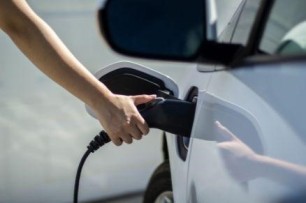
Best tips to keep your electric car safe during monsoon
Monsoon is finally here! From the cooling showers to the irresistible scent of the soil after rain, there is much to be excited about the monsoon. But with all this beauty comes the problems of sludgy, slippery roads that make for a great inconvenience. With heavy rains comes damage to vehicles, which is seemingly unavoidable.
With petrol prices seeing a significant hike, more and more people are shifting their focus on owning an electric car. While there are many advantages to owning an electric vehicle, it comes with its own set of problems— one being that it is more susceptible to damages caused by rainy weather.
This blog gives you some helpful tips to keep your electric car safe and avoid spending hefty money repairing it.
1. OEM-issued charger:
Safe charging should be your top priority as an electric car owner. Verify that your charger is original. Original chargers ensure the car charges efficiently.
Current surges are common during heavy downpours, which can result in serious damage to the car's batteries. It can cause short-circuiting in the vehicle's charging point and cause internal damage to the wiring. The best way to prevent this is by charging the car in a dry and covered place, like an underground parking lot or a shed. Care should be taken to ensure that the charger is dry. Also, avoid charging the car in extreme weather conditions like lightning, cyclones, and thunderstorms.
2. Use ancillary components to help:
Using the features such as windscreen wipers, defoggers, and air conditioners to dry the car is a great idea to prevent the vehicle from corroding and rusting in this moist weather.
3. Don't forget the interiors:
The interior takes the worst hit in the monsoon. Muddy shoes and wet clothes are a frequent occurrence. From fungal blooms to a stench that will not go away no matter what you do. So, it's an ordeal to clean the inside of a car very often. Prevention is much better than cure in this case.
Use plenty of newspapers and towels to help soak up the water. Keep the windows rolled up and let the wet areas and the moisture dry up. If that doesn't work, you can also use a hair dryer on the wet spots. Don't forget to keep the cabins dry and clean.
4. Keeping the exterior (non-electrical parts) clean:
The car's exterior is constantly exposed to harsh weather conditions, and this problem gets aggravated in rainy weather. Especially in metros, the additional problem of acid rain comes in. This rain is corrosive and can strip your car of its protective paint. Be extra cautious during the monsoon, and wash your car regularly to prevent the paint from rusting.
Electric cars are quickly replacing petrol cars as an environment-friendly alternative. This is due to various reasons such as low running cost, lower maintenance, high acceleration, and most importantly, the near-zero carbon emissions they produce to help you reduce your carbon footprint.
However, it has its cons. The rechargeable battery is costly, and very few mechanics will be well-versed in fixing defects in an electric car. These are the reasons why researching the best car insurance in India will be the best option to avoid venting your finances during unforeseen circumstances. Implement the above tips and get ready to enjoy the best of monsoon by taking a road trip in your electric car.
Click HERE to know more about car insurance India.
Disclaimer: The information provided above is for illustrative purposes only. To get more details, please refer to policy wordings and prospectus before purchasing a policy.

Here is a list of the top seven national parks in India to visit for your next wildlife retreat
Sometimes, all we need to cool off and get the synchronization between our mind and body right is a break from the fast-paced city life. Moreover, we need some peaceful time-off to breathe and grasp the gravity of our existence. And nothing is better than being surrounded by nature to savour all that it has to offer.
A wildlife retreat is a fantastic opportunity to get yourself that peace and reconnect with your family while enjoying the charm of nature. India has abundant national parks and sanctuaries to offer a city escape to nature lovers. Let’s discuss some of the best national parks which provide an ideal space for a wildlife retreat.
1. Ranthambore National Park, Rajasthan:
Comprising a distinctive ecosystem, this national park is home to several tigers that one can easily spot on the safari. It is one of the significant reasons why tourism at Ranthambore has observed colossal growth. You can choose your accommodation from a list of options which ranges from luxury tents to boutique hotels.
2. Jim Corbett National Park, Uttarakhand:
Luring in the most visitors every year and famous for its Bengal tigers, Jim Corbett National Park has seen significant development in its tourism by opening up numerous lodges, hotels, resorts, etc. As a result, this national park is one of the top destinations for budget travellers every year.
3. Kanha National Park, Madhya Pradesh:
Situated in the heart of India, this tiger reserve has dense wildlife (swamp deer, India tiger, and much more), which one can explore on a jungle safari. Plus, you have the benefit of choosing from several staying options- luxury tents and hotels to budget resorts, all designed for your comfort.
4. Kaziranga National Park, Assam:
Carrying the baton for the most famous national park in Northeast India, Kaziranga houses the prestigious one-horned rhinoceros. Developing interest in northeastern tourism has expanded staying options in this area. Several luxury resorts and budget hotels with all the amenities are ready for tourists and travellers.
5. Sunderban National Park, West Bengal:
This national park, along with tigers, is also famous for its single block of tidal halophytic mangrove forest, the largest one in the world. As a result, it gains much traction from adventurers and wildlife lovers across the country. The mystical mangroves add to the incredible experience of staying in the lap of nature.
6. Gir National Park, Gujarat:
Home to the Asiatic lions, world-renowned Gir National Park is rich in flora and fauna. Therefore, making the stay here a perfect opportunity to explore the wildlife while enjoying your retreat. Moreover, it provides many luxurious and budget-friendly accommodation choices, convenient for tourists and nature enthusiasts.
7. Bharatpur Bird Sanctuary, Rajasthan:
Otherwise known as Keoladeo National Park, this bird sanctuary offers the perfect opportunity for birdwatching holidays in India. Adding to this absolute blissful getaway experience are the accommodation options of heritage hotels and jungle lodges.
When the stressful and noisy city life takes a toll on your happiness, it's the time that you pause and spend some time in serenity. If you are a true admirer of nature, the above-listed places are ideal for experiencing a natural delight and unwinding in the wildlife retreat. So, plan your trip to these bewildering national parks and escape into the wilderness. But, while making travel plans, you need to ensure that your journey stays free from any potential travel risks. Safeguard your travel dreams with the benefits of a comprehensive travel insurance plan from the best general insurance company.
Click HERE to know more about general insurance company.
Disclaimer: The information provided above is for illustrative purposes only. To get more details, please refer to policy wordings and prospectus before purchasing a policy.

Twelve tips for the new parents to upbring their little ones in the best way
Being a parent is always a testing situation and becoming one during COVID-19 adds to the many new challenges. The pandemic means significant changes for newly become parents. Keeping the kids confined in the house leaves an impact on their overall development. Here we look at how new parents can navigate this difficult time and upbring their little ones as a gift for entering parenthood.
1. To encourage trust-building, expose your child to physical presence and emotional connection with you and your family.
2. Imitating facial and other expressions is a natural act of every infant. Therefore, smiling, sticking out the tongue, and hands movement are good ways for your child to study and follow you. These innocent gestures will assist you in finding out what they need and even how they feel before they have the words to say it.
3. Allow them to have physical movements on their own. A significant part of a child's overall growth relies on how much they move. Hence, let them indulge in activities like walking, running, dancing. In addition, motivate them to play outdoor sports to stay active and fit.
4. Never leave a baby unattended and ensure a high level of safety with a baby-proofing setting done for the house.
5. Pose basic questions to your toddler and correspond to their attempts to communicate.
6. Allow your child to select an activity where you can spend quality time together, avoiding disturbance and making it your daily favourite time with them.
7. Allow them to speak out their tantrums. Encourage them to be more vocal towards the people they trust.
8. Engage them in activities and games from which they can learn, for example, shapes, colours, numbers, alphabets. If learning is made fun during the first years of children, they grow healthy.
9. Read aloud stories together and ask questions about what they observe in the stories. This cultivates interest in your children and makes them feel curious about new things with deeper perspectives.
10. Applaud for their help. Let your kid know your feelings when you see them doing house chores.
11. Find ways to share with them why moral values are significant in life. For example, make them understand the importance of helping others and doing their work with loyalty and dedication.
12. Last but not least, try to be your child’s best friend first and live the moments. They always look for a friend in their parents. Be the one!
Raising a child is something that no one can prepare us for. Just like your newborn, you too will learn as you go. The initial years with your child will take up most of your time and even leave you exhausted, but this is the best opportunity to cherish a beautiful bond with them.
Every parent has ongoing concerns regarding the growth and safety of their kids. Lay the foundation of a healthier tomorrow for your little ones by investing in the best health insurance in India for parents that covers your as well as your child’s health. Kids receive health insurance benefits from the family floater plans until they turn major.
Click HERE to know more about the best health insurance in India for parents.
Disclaimer: The information provided above is for illustrative purposes only. To get more details, please refer to policy wordings and prospectus before purchasing a policy.
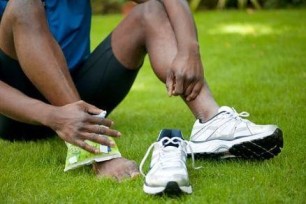
Here are a few effective ways to heal injuries faster
In traversing through a fast-paced life, accidents are bound to occur. You might skip a step while rushing down to get your cab or cut your finger while chopping up vegetables, or simply fall and injure yourself while playing your favourite sport. Ideally, we would all want to lead a life without injuries and worry about medicines and post-care. But as someone has rightly said, "Falling is part of life, getting up is living." So, we're here to help you heal your injuries without burning a hole in your pocket.
Medical care costs are skyrocketing, and it is always the best option to get individual personal accident insurance to ensure the best coverage for severe injuries. But, for instant relief from minor injuries, you may focus on aiding the process of recovery and healing yourself faster. So, let's look into it to make our healing process quicker.
1. RICE:
RICE is an acronym for REST, ICE, COMPRESSION, ELEVATION. It is used for mild sports injuries. As the names suggest, one should give ample rest to the affected area, keep applying ice packs, and use a medical bandage for compression. Keeping the affected area elevated above the heart's level is suggested to reduce pain and swelling.
2. Eat the right food:
Certain food items possess the ability to catalyze the healing process. For example, protein-rich food like eggs, meat, cottage cheese, and citrus fruits like oranges have anti-inflammatory properties and help build ruptured tissues.
3. Wash the affected area:
In case of open injuries, washing the wound with clean water and cleaning the area with saline solutions is suggested to avoid the accumulation of bacteria.
4. Anti-bacterial ointment can do wonders:
Getting the wound examined by the doctor and applying a prescribed ointment to open wounds is highly suggested as it prevents infections and helps in faster healing.
5. Turmeric paste:
This golden formula from grandma's corner is a no-fail solution to any wound. Turmeric has anti-bacterial, anti-fungal, and anti-inflammatory properties. In addition, the curcumin present stimulates growth and helps faster restoration of the wounded area.
6. Apply pressure in case of blood loss:
It is suggested that in case of blood loss, one should maintain pressure in the affected area to avoid anaemia and ensure a faster recovery. Excessive blood loss can be a life-threatening condition. If the bleeding persists, one should see a doctor at the earliest.
7. Stitches or staples:
If the wounds are deep, it is essential to go to the doctor and get stitches or staples. Leaving them open for a prolonged time may hinder the growth of new blood vessels and prevent the wound from closing. While these procedures can be expensive, you can rest easy if covered by individual personal accident insurance.
So these are a few ways that can help you in your journey to healing yourself faster and getting back in the game. Your body is a temple, and giving it proper rest and care after injuries will help you regain your former strength sooner than you think. It is always suggested that you go to a doctor and get your injuries examined, but these remedies can help if they aren't significant.
Click HERE to get details about the different individual personal accident insurances.
Disclaimer: The information provided above is for illustrative purposes only. To get more details, please refer to policy wordings and prospectus before purchasing a policy.

The best reasons to opt for sports bikes for touring and adventure
A sports bike provides riders with an exhilarating and adventurous experience. Several high-quality sporty bikes have recently entered the market, each with its own unique set of features. In addition, sports bikes have a more upright riding position, long travel suspension, and bigger tank capacity.
Long travel suspension contributes to optimal ground clearance, allowing smoother driving over rugged terrain, which makes it possible for motorcyclists to travel into distant locations with ease. Potholes and roadblocks are no match for their speed and agility.
The following are the ultimate five reasons you should ride a sportbike for touring.
1. Customisation:
A sports bike is more convenient than a regular bike when it comes to touring. Buyers can improve the quality and crash safety of their bikes with the help of after-sale services. Every accessory is protected against rain, snow, and hail with an all-weather coating for added durability.
Helmets and riding clothes can be made just for you. It assists you in planning your outfits for road trips and prepares you for outdoor adventures. By your requirements and the location of the destination, you can select from a variety of tire options available in the market.
2. Enhanced convenience:
Seating comfort is crucial for every motorcycle rider, and many sports bikes offer it. In addition to traction control, an anti-lock braking system and several temperature riding modes make sports bikes equipped with exclusive features that assure riders' convenience. Furthermore, it provides several other technologies that make riding a motorcycle safe and enjoyable for long journeys.
The bikes are developed with practical features such as cruise control and heated seats for added comfort.
3. Serviceability and dependability:
Sportbikes are relatively simple to maintain and repair. The reduced bodywork makes routine maintenance, inspections, engine cleaning, and other vital components easier.
Because these bikes are engineered to withstand gruelling conditions for an extended time, their parts and materials are overbuilt for most types of travel. More than any other bike, their durability quotient is high. They are more powerful and torquey in technology, with designs that are fashionable.
4. Touring experience:
Touring is about more than just your vehicle. It is also essential to have a positive experience. You will undoubtedly meet and engage with other riders. Also, sports bikes have a reputation for igniting conversation with curious locals about your origins and destination.
You get to participate in many chats that will leave you with a slew of pleasant memories. A growing number of individuals are developing an interest in sports bikes. Keep an eye out for activities in your area, and don't be hesitant to drop over with your camping gear if you see one.
5. Greater fuel storage capacity:
It is common for sports bikes to have a bigger tank capacity, between 13 and 20 litres. A larger tank equates to a more excellent range of operation. In addition, it eliminates the need for numerous stops for refuelling when travelling long distances. The fact that petrol stations are far and few when you are travelling makes this feature all the more crucial for your trip!
In a nutshell, sports bikes make it possible to cover vast distances with ease, unmatched speed, and durability. It is well worth purchasing for any lengthy journey because of its design and comfort. Feel the seamless power of the engine revving your heart and exciting the rider in you.
If you have a passion for travelling on two wheels, then a sportbike can help you live your passion to the fullest. However, apart from the fun, you need to prioritise your safety while riding such powerful machines. Ride with proper safety gear and invest in 2 wheeler insurance to safeguard your finances against any damages.
Click HERE to purchase the best 2 wheeler insurance for your sports bike.
Disclaimer: The information provided above is for illustrative purposes only. To get more details, please refer to policy wordings and prospectus before purchasing a policy.

Practicing farming can have a positive impact on your life. Know how
India is an agricultural-based country, where farmers and farming have an exponential impact on the whole country. The concept of farming should not just be confined to the villages or rural areas. Rather than perceiving it as a profession, it should be practiced as a hobby that can offer several valuable experiences.
Have you thought of maintaining your own farm? This thought might have crossed your mind at least once, but you might be wondering how farming can be helpful to you. It might sound surprising to most city dwellers, but yes, farming in your backyard, lawn, or terrace can positively impact our lives. Let's know-how.
1. Creates multiple opportunities:
The farming sector is booming with many promising job opportunities. The growing demand for education and significant research in the farming sector brings many new opportunities, such as farms, nurseries, and hatcheries.
2. Maintain the economy:
The increasing population can meet the rising job opportunities in the farming sector. This ensures that the demand and supply balance is maintained. As a result, the prices of food and other products stay level for the consumers.
3. Teaches emotional investment:
Growing a crop is what nurturing a child feels like. You sow the seeds at the earliest stage and make sure they grow properly. You provide all the other nutrients and protect the seeds and saplings against harsh wind, heavy rain, and excessive sunlight. You choose suitable pesticides to ensure that the bugs and other insects don't destroy your crops. The whole cultivation process requires a lot of capital, physical labour, and emotional investment. Patience plays a huge role here. Understanding how emotions develop throughout the entire growth helps in the long run.
4. Medicinal purposes:
Many crops and plants act as medicines rich in various nutrients and minerals. Several medical practitioners advise their patients to consume the processed version of these plants (or even raw) to treat nausea, morning sickness during pregnancy, kidney stones, etc. Many of these crops are cultivated to feed the cattle and livestock and get the best quality of dairy products.
5. Saves water and soil:
The roots of the crops hold the soil tightly, thus avoiding soil erosion due to severe climatic factors like heavy rain or wind. This helps keep the nutritional value of the top layer of the soil, which is essential for the growth of plants. Practicing farming also helps avoid the drainage of toxic chemicals into the rivers or seepage into the water table.
4. Self-assurance:
It will help if you build a strong anti-nausea mindset. Keep reciting to yourself that you will not feel sick or nauseous. This prepares your brain to think flying is normal and there is no need to fear. You will gain confidence and reassure your body to stay calm, especially during stressful moments. Ask a friend or travel companion to help you when you feel nauseous.
6. Sustainability:
Farming crops that provide biodegradable products like cotton, paper, wool, etc., contribute immensely to sustainability. Due to the excessive pollution and increased usage of non-biodegradable products, there is a massive negative impact on the climatic conditions. Sustainability is a huge influencing factor in saving our planet against significant issues like global warming and climate change.
Those were some of the pointers on how practicing farming can significantly impact your life. Farming connects you directly to the soil, and the moment you feel the soil, you reap good outcomes. This sublime connection will leave a positive impression and bring out the best version of yourself.
Your contribution through farming does not mean just growing crops. It highlights your contribution to boosting the economy, promoting sustainability, and encouraging healthy living. Farming enables access to a variety of healthy food products, which help in building strength and immunity in people of all age groups. And with global health standards getting a massive blow, it becomes more important to address health issues with seriousness.
Just like you protect your precious crops from getting damaged by using the right pesticides, it is vital to safeguard your and your loved one's health. You can accomplish this by purchasing the best health insurance policy. Make a hassle-free purchase and buy health insurance online to benefit yourself with the best premium and returns on investment.
Click HERE to know more about how you can buy health insurance online.
Disclaimer: The information provided above is for illustrative purposes only. To get more details, please refer to policy wordings and prospectus before purchasing a policy.
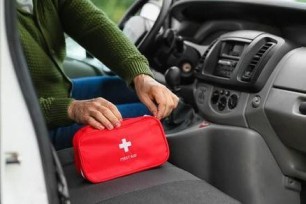
Why a first-aid kit in your vehicle is an excellent step towards safety
Justifying the name, first-aid kit is the immediate response of medication at the time of emergency. Those initial moments can help prevent an injury from getting critical during an accident and can potentially save the life of someone on the road.
A first-aid kit in the car is essential for many situations that don't require the help of a medical professional. Most of us spend our time travelling, either for work, holiday, shopping or long drives during weekends. Unfortunately, with roads becoming more prone to accidents, the probabilities of mishappening are common.
In such situations, having a first-aid kit in your vehicle enables you to avoid severe complications until help reaches you. For the minor injuries, a first-aid kit will be a saviour to cure cuts, scratches, and other minor wounds.
The advantages include:
• Helps prevent injuries from getting worse: It is crucial to address the minor cuts or wounds developed after accidents before they turn septic. Leaving the wounds open will invite infections, and in no time, you will start feeling weak. Avoiding such situations by using first-aid is the best thing to do. Soak the cotton with antiseptic liquid and gently apply it over your wounds or scars and clean the area thoroughly. Later, use bandages to cover the wounds and let them heal at their own pace.
• The belief of being safe: Having a safety kit in the car will give you the mental satisfaction of having resources ready in case of emergencies. It makes you feel prepared to take good care of yourself even when driving solo. Another add-on to this belief is valid car insurance, which provides financial protection against any eventuality.
• Be the saviour in the crowd: If you ever witness any severe accident, having a first-aid kit will make you the first responder. You can treat and bandage the wounds to prevent excessive blood loss that can deteriorate the injured person’s health. Remember, your alertness and courage can save a life.
Must-haves in your first-aid kit:
A first-aid kit is a personal resource for emergencies, and everyone may keep them equipped with the accessories they think they may need. However, here is a checklist of some essential items that should be in your vehicle's first-aid kit.
• Cotton (swaps) and bandages
• Basic antibiotics, antibiotic cream and pain relief spray
• Hand sanitizer
• Antiseptic wipes and antiseptic liquid
• Safety pins, scissors and a tweezer
• Gloves
• Rehydration sachets
• Torch with extra batteries
• A thermometer
You must check these necessities before you pack your vehicle's first-aid kit. Additionally, ensure that you keep a list of contact numbers (family, friends, doctor, etc.) so that in case of any severe injuries, someone can reach out to your close ones and inform them about the event.
Preparedness can prevent unexpected situations from getting worse for you. Whether you are travelling alone or travelling with your friends or family, you shouldn't compromise safety. The earlier you understand the importance of having a first-aid kit in your vehicle, the better it’ll be for you.
In addition to it, for the safety of your car during mishaps, consider getting car insurance. Although having car insurance cannot prevent accidents, it can assure financial security during emergencies. As it is rightly said, "It's better to be safe than sorry". With these small precautionary measures, you can keep big troubles out of your way. So, travel safe, travel responsibly!
Click HERE to get the best insurance for your car.
Disclaimer: The information provided above is for illustrative purposes only. To get more details, please refer to policy wordings and prospectus before purchasing a policy.


